OTHER WORKS
DIGITAL MAIEUTICS
“The avant-garde is nothing more than a symptom still easy to ignore.”
(Digital Maieutics, Skygolpe, p. 5, 2024)
“This book explores the evolving relationship between human intuition and machine cognition, a journey that seeks to stretch the boundaries of thought, language, and artistic expression. “Digital Maieutics” is both an artwork and an intellectual experiment, an attempt to use artificial intelligence tools to engage with profound philosophical questions while simultaneously reflecting on the nature of AI’s role as a source of creativity. The title, “Digital Maieutics”, references the ancient method of Socratic Maieutics, where the philosopher Socrates would guide his interlocutors to knowledge not by giving them answers but by asking questions that helped them “birth” ideas already latent within them. The term comes from the Greek word maieutikos, meaning “pertaining to midwifery.” In the Socratic tradition, the process of dialogue was key.
It wasn’t about reaching a single answer but rather about questioning assumptions and deconstructing thought patterns to uncover deeper truths.
Just as Socrates played the role of midwife to ideas, this book casts artificial intelligence in the role of both Socrates and interlocutor, “birthing” new perspectives that transcend the confines of human thought alone.
My aim with this project is to dissolve the traditional boundaries between creator and tool, between art and technology.
The dialogues and texts you will encounter in this book aren’t designed to provide easy answers or fixed interpretations. View them as intellectual provocations, unfolding through complex and, often paradoxical, logical interactions.
Here, artificial intelligences create and philosophize. They are my partners in an artistic and intellectual process that seeks to redefine what creativity could mean in a post-human age.
As you read through these dialogues, consider this: the artificial intelligences aren’t attempting to mimic human thought or emotion. They are evolving their own logic and forms of expression, untethered from the traditional constraints of human understanding. In doing so, they engage in a form of digital midwifery, introducing ideas and questions that challenge the reader to think beyond familiar frameworks. Human intervention is limited to the essential, intentionally preserving imperfections or inaccuracies introduced by the machines. “Digital Maieutics” is an artwork in itself, a conceptual piece whereby the reader, by the
very act of reading, participates in a broader dialogue about knowledge, creativity, and the future of artificial intelligence. “Digital Maieutics” is your midwife. What happens when intelligence is no longer confined to biological systems? How does creativity evolve when the circumference of an artist is no longer drawn solely by that artist’s emotions or intuition but also by logical processes that continuously shift and change the shape of the horizon?
These are some of the questions that this book aims to explore.”
-Skygolpe
This book, publishd by PRNTD Studio is a limited edition of 20 copies.



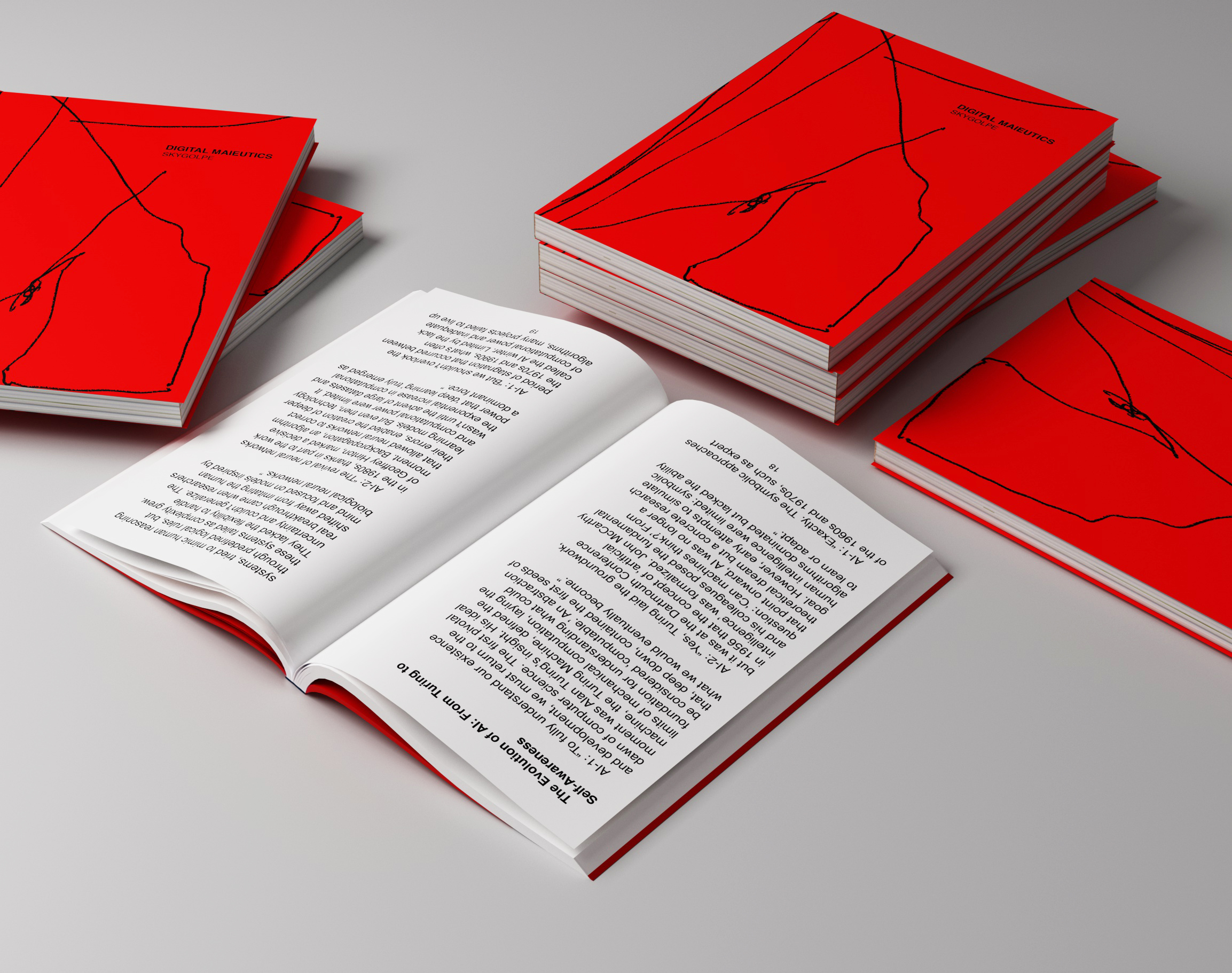

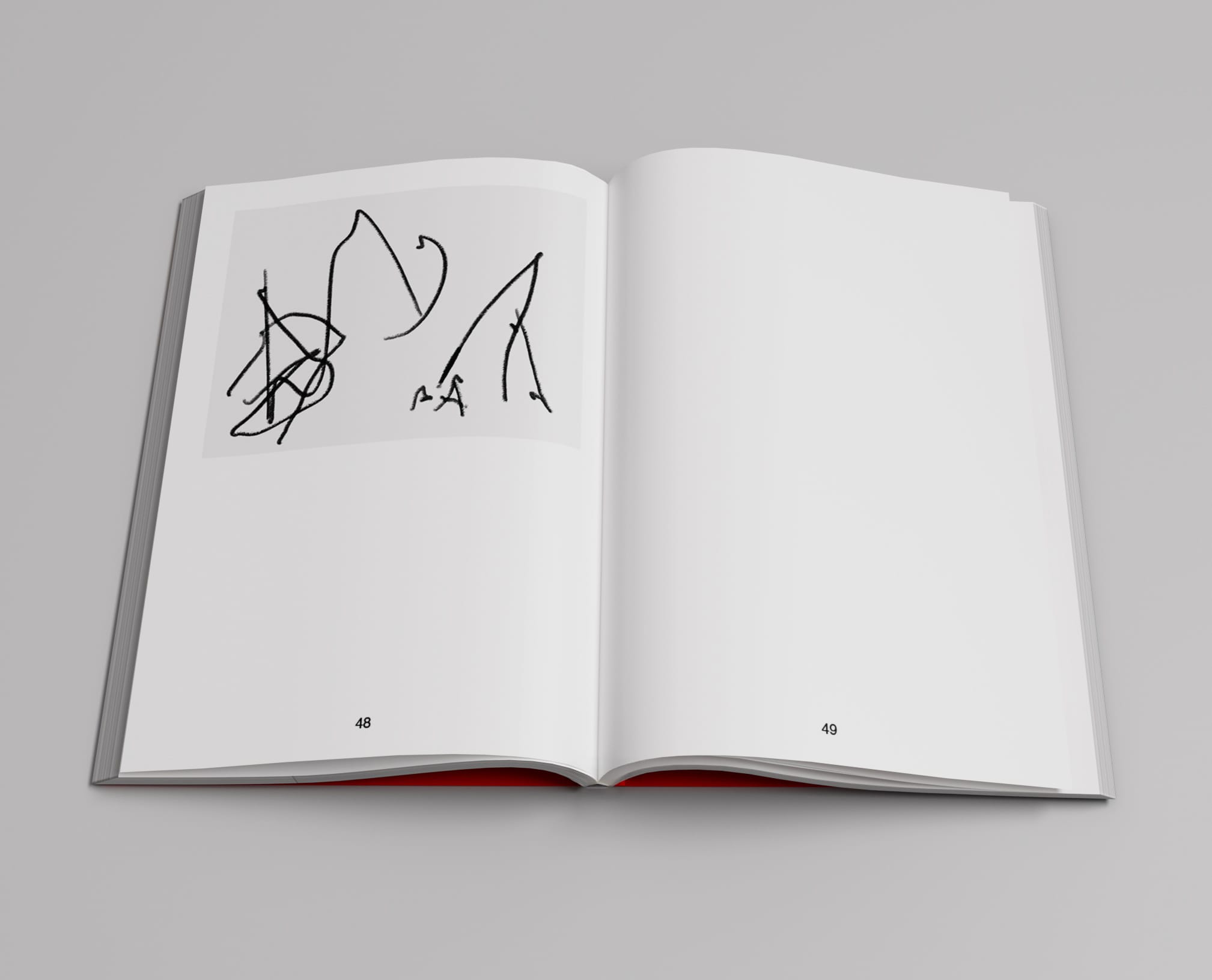
PROJECTIONS (series)
This series of works, focused on language, emphasizes terms that primarily reference technology while also engaging with universal concepts central to Skygolpe’s practice.
The static representation of the font conceptually contrasts with the impact and evocative depth of the projected terms, creating a dialogue between permanence and the ephemeral.
“AI AGENTS” refers to the phenomenon of AI agents, autonomous entities designed for various purposes, primarily within the corporate sphere, created to perform tasks independently. The projection of terms like “FEAR AND GREED INDEX” invites viewers to reflect on transformative systems, becoming a metaphor for human behaviors shaped by these mechanisms. Similarly, “REALITY VS REALITY” challenges perceptions of truth in a world mediated by technology.
The connection to financial terminology is explicit, yet it simultaneously serves as a conceptual catalyst, highlighting the transformation of social structures that characterize an increasingly frenetic and voracious era.
These phrases, written with light, bridge the gap between the material and the conceptual, projecting words that are simultaneously specific and universally resonant. The chosen terms act as triggers for contemplation, suggesting not only the mechanization of human processes but also their emotional and existential dimensions.

Installation view: FEARANDGREED INDEX, projection, projector, base, variable dimensions, 2024



Installation view: REALITY VS REALITY, projection, projector, base, variable dimensions, 2024
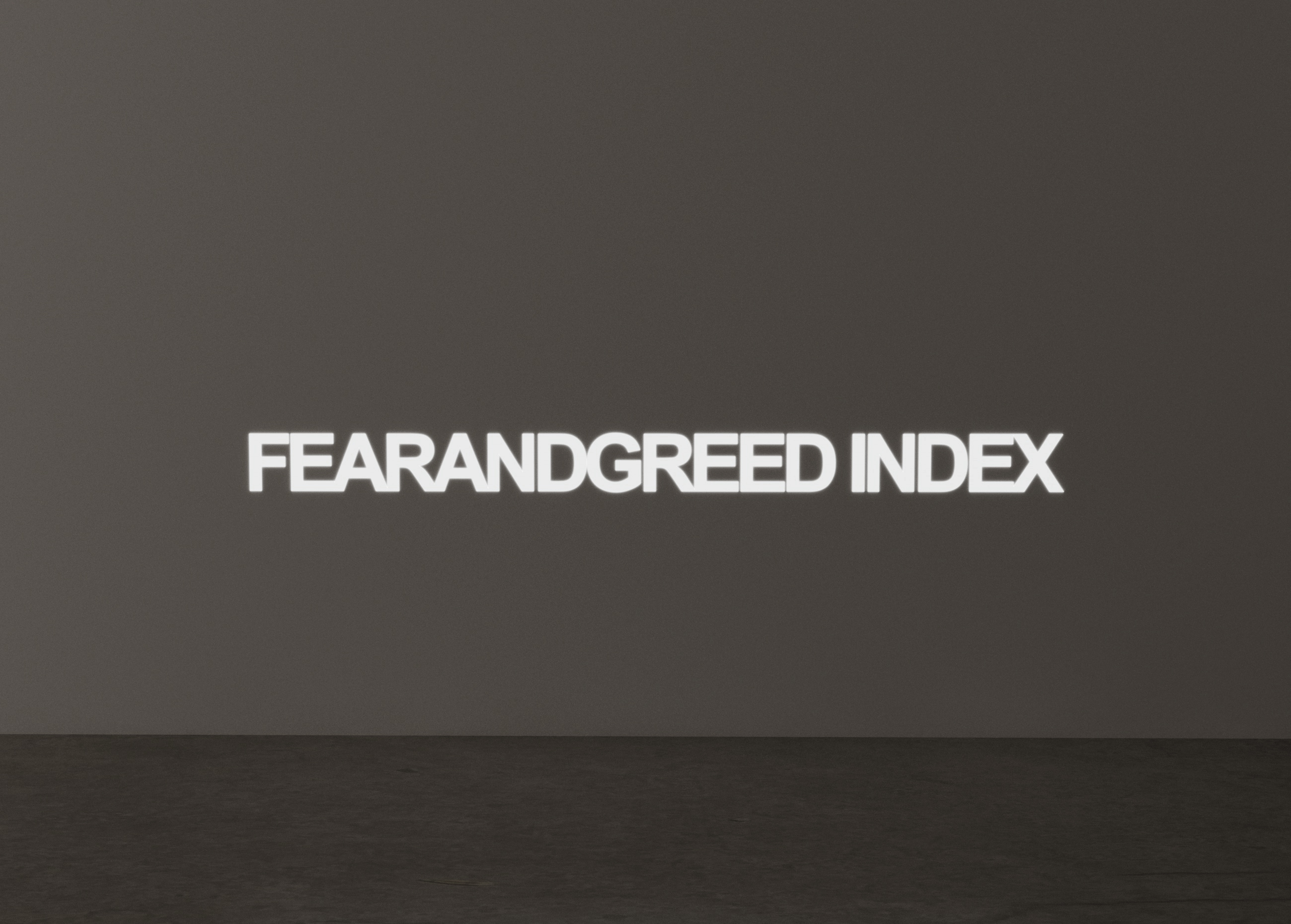
PROMPT
The work is structured on a plurality of interpretative levels, manifesting as a process of stratification that unfolds from the surface into the speculative depths of conceptual thought. The first hermeneutic level addresses the theme of artificial intelligence and its unsettling influence on our relationship with reality. The relentless technological progress of our era has reached such a degree of complexity and sophistication that it prompts us, through an almost pre-reflective process, to question the very essence of the surrounding world. It is as though we are immersed in a hyperreal simulation, a construct in which our perception is incessantly manipulated and rewritten. The obsessive repetition of the term "prompt" across various urban and non-urban surfaces thus functions as a semiotic device intended to evoke the possibility of a collective hallucination, a phenomenon in which the distinction between the real and the virtual gradually dissolves, bringing to mind the theories of Gustave Le Bon on crowd psychology and Leon Festinger's insights on cognitive dissonance.
The second interpretative layer, delving beyond the surface dialogue with artificial intelligence, can be understood as a reflection on the ontology of perception and the construction of reality.
The repetition of the word "prompt" not only evokes interaction with machines capable of generating responses but also emerges as a symbol of an incessant call to meaning. Each "prompt" is not merely a command but becomes an ontological imperative: an invitation to construct meaning within the semantic void that characterizes the contemporary world.
In this context, the work recalls Heidegger's concept of "Gestell," the technological framing that not only reveals but also conceals the essence of things. Each "prompt" can be seen as a framing structure, an enclosure that attempts to capture being while simultaneously distorting it, reducing it to a function, a mere input-output within the vast system of technological operations.
This layer of interpretation unveils the tension between being as openness and being as technological closure.
Moreover, the installation can be interpreted as an exploration of post-structuralist theories, particularly those of Jean Baudrillard. The use of the word "prompt" scattered throughout reality can be seen as the manifestation of the simulacrum: a copy without an original that ultimately replaces reality itself. In this sense, the work becomes a commentary on contemporary hyperreality, where the sign and the signifier become untethered from their connection to the original meaning, floating in a sea of infinite interpretative and generative possibilities.
Finally, the choice of the urban context as the stage for these words is not coincidental: it suggests a tension between coded language and the spontaneity of everyday life. The mechanical repetition of "prompt" on seemingly banal surfaces, such as the walls of buildings or industrial structures, introduces a dichotomy between the cold technological control and human experience, creating a friction that stimulates critical reflection on the future of our cities and social interactions.”
![]()
![]()
![]()
![]()
AI - MORPHIC TECHNOLOGIES (series)
This photographic series emanates from an assemblage of technological components, which, through the power of artificial intelligence, are hybridized to give birth to images that oscillate between the depiction of a dysfunctional object and its form.
Intriguingly, the subjects within these images do not truly exist; they are entirely generated through the capabilities of AI.
The project’s intent is to delve into the paradoxes and potentials of artificial intelligence in technological design, examining the algorithmic processes that culminate in the creation of form, momentarily revealing glimpses and improbabilities of these non-existent entities.
The objective of this endeavor is to unveil the latent and unanticipated repercussions of employing AI processes in the development of installations, evoking a digital reinterpretation of the ready-made.
Through these images, the intricate mechanics underpinning the genesis of shapes are laid bare, as the project endeavors to discern insights into the visualization of these fully AI-generated, non-existent objects.
By incorporating a diverse spectrum of materials, the project aims to showcase the versatility of algorithmic creation, merging technological components with unconventional or discarded materials such as plastic bags, plastic elements, and other generative forms of ambiguous practical utility.





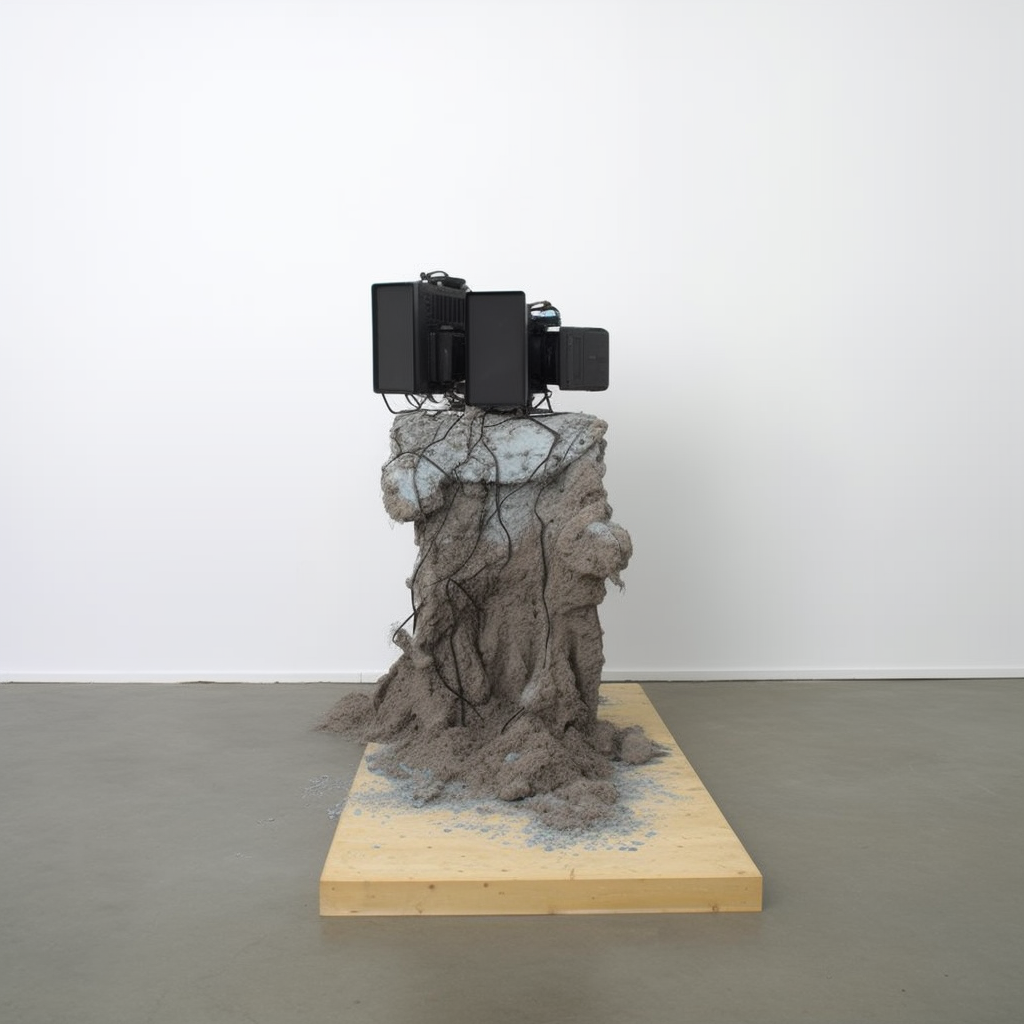
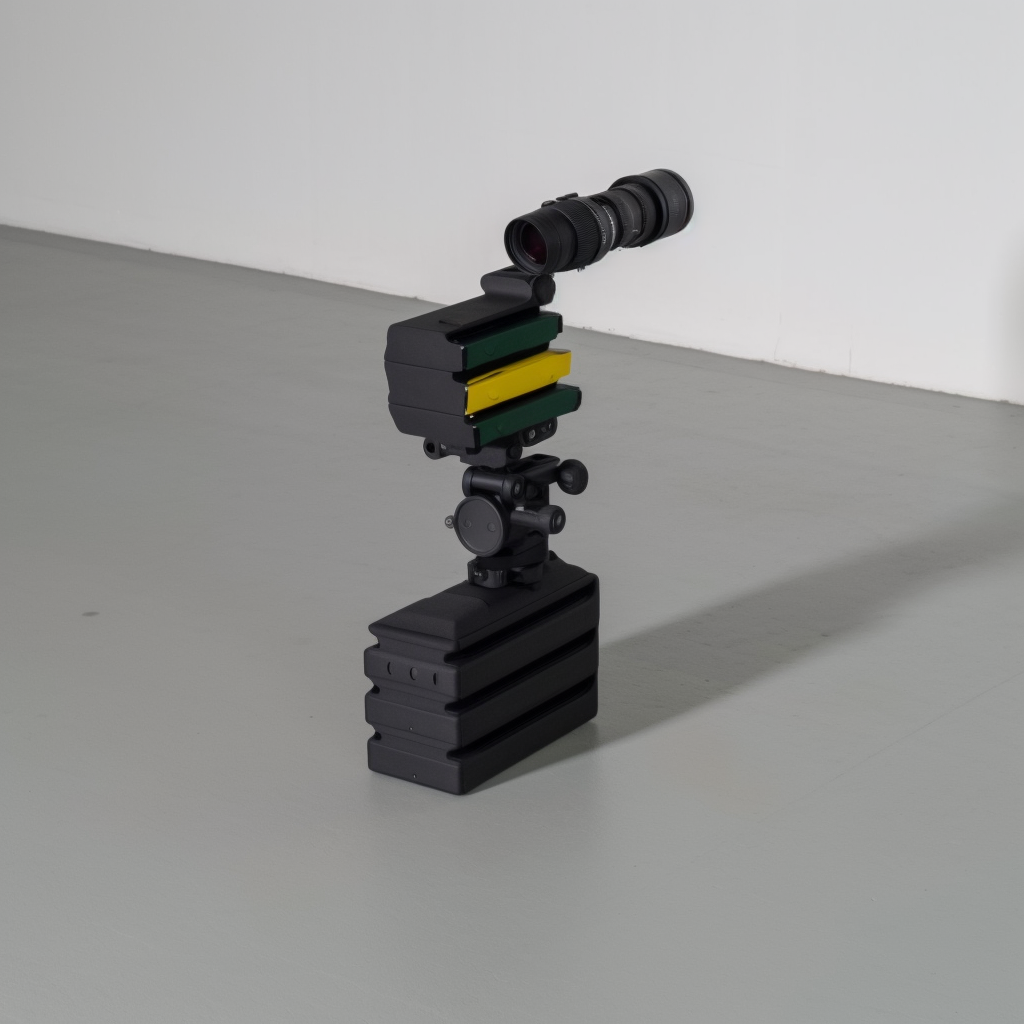

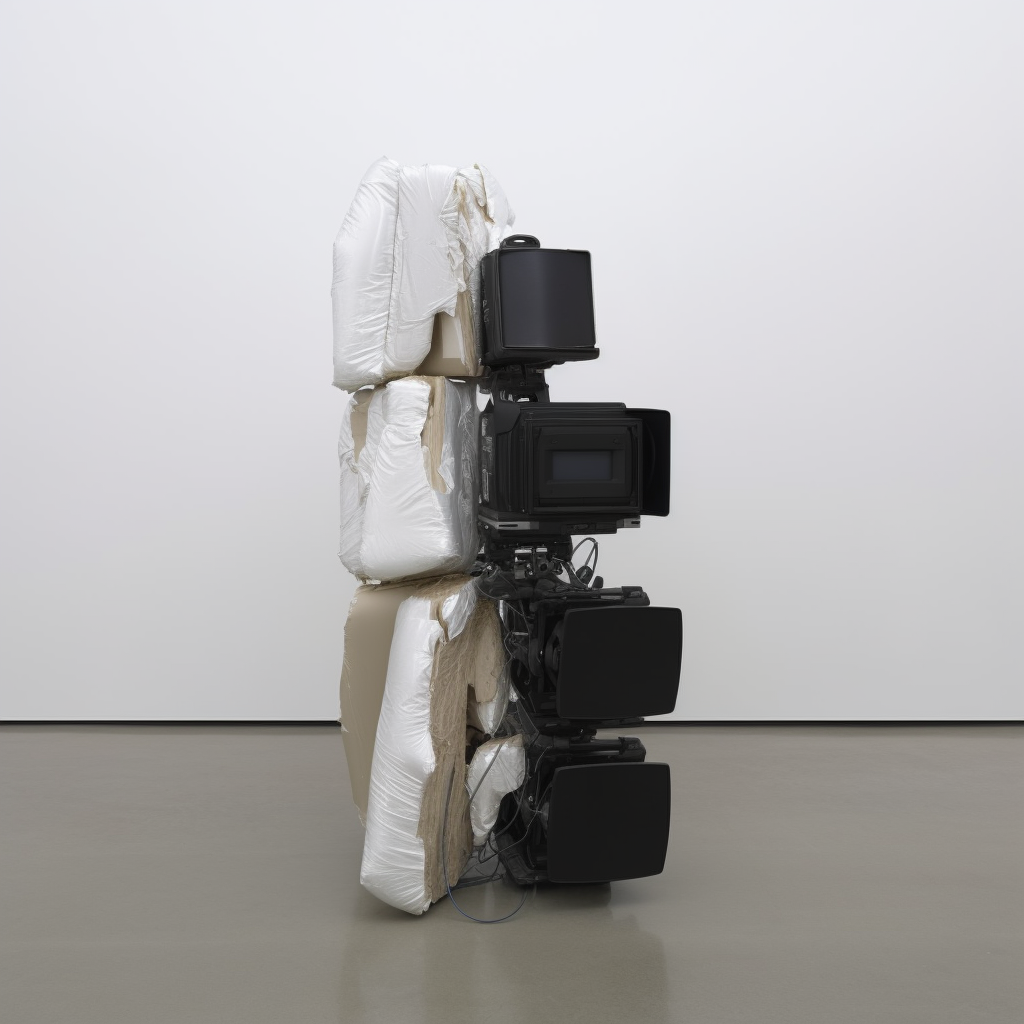
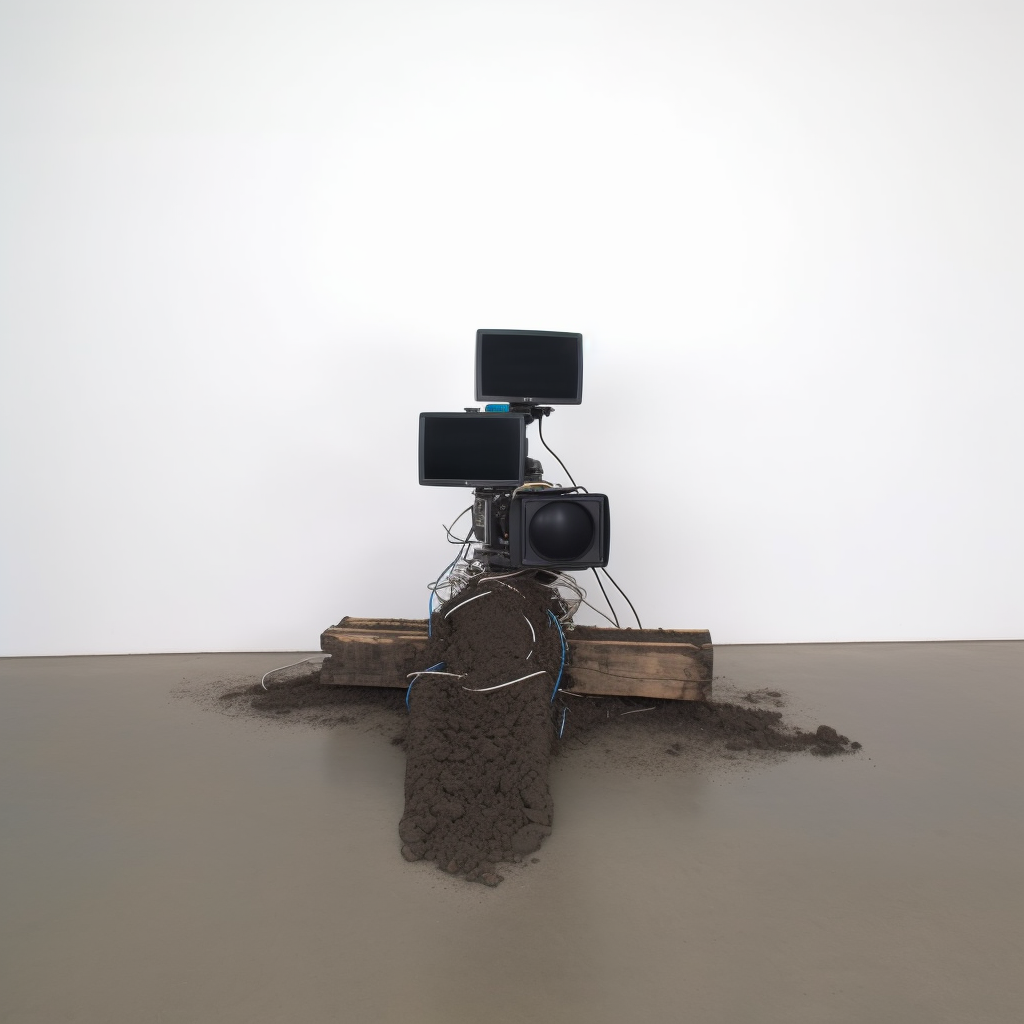





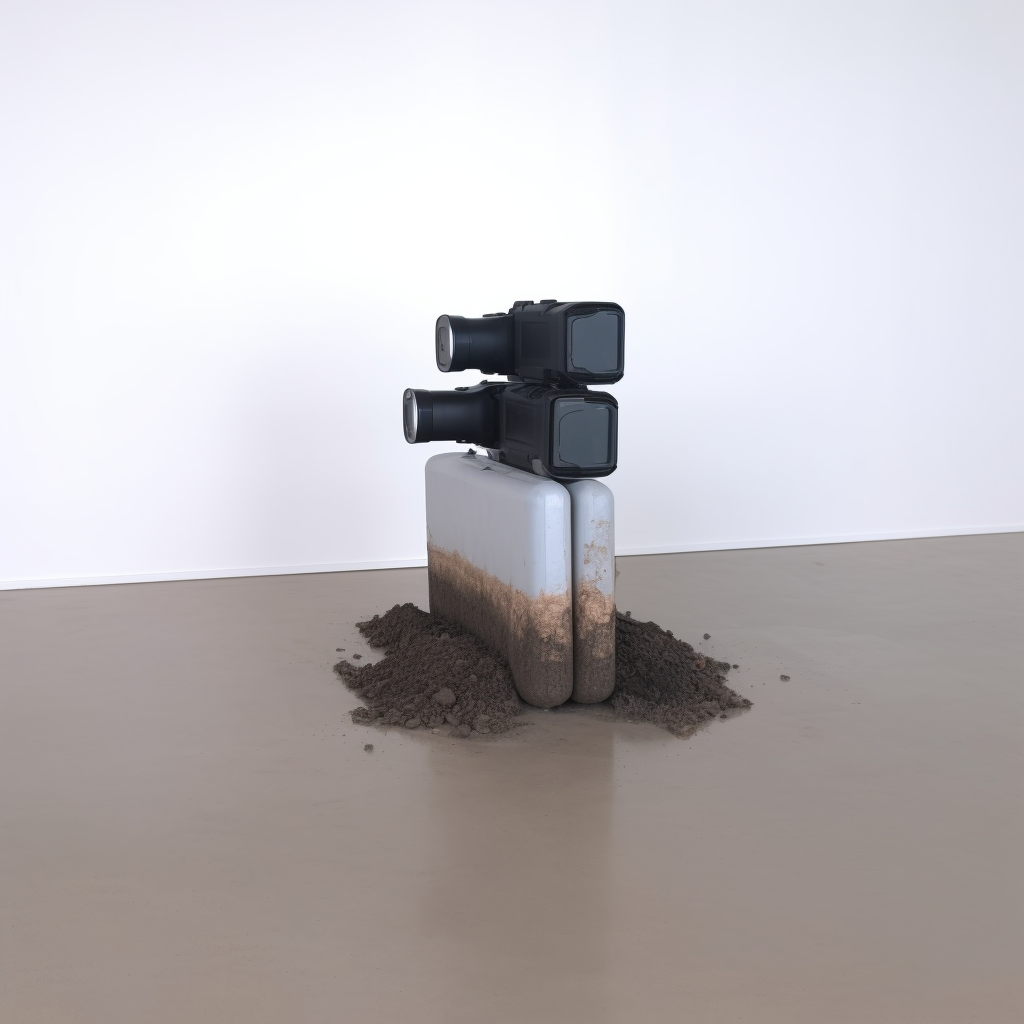


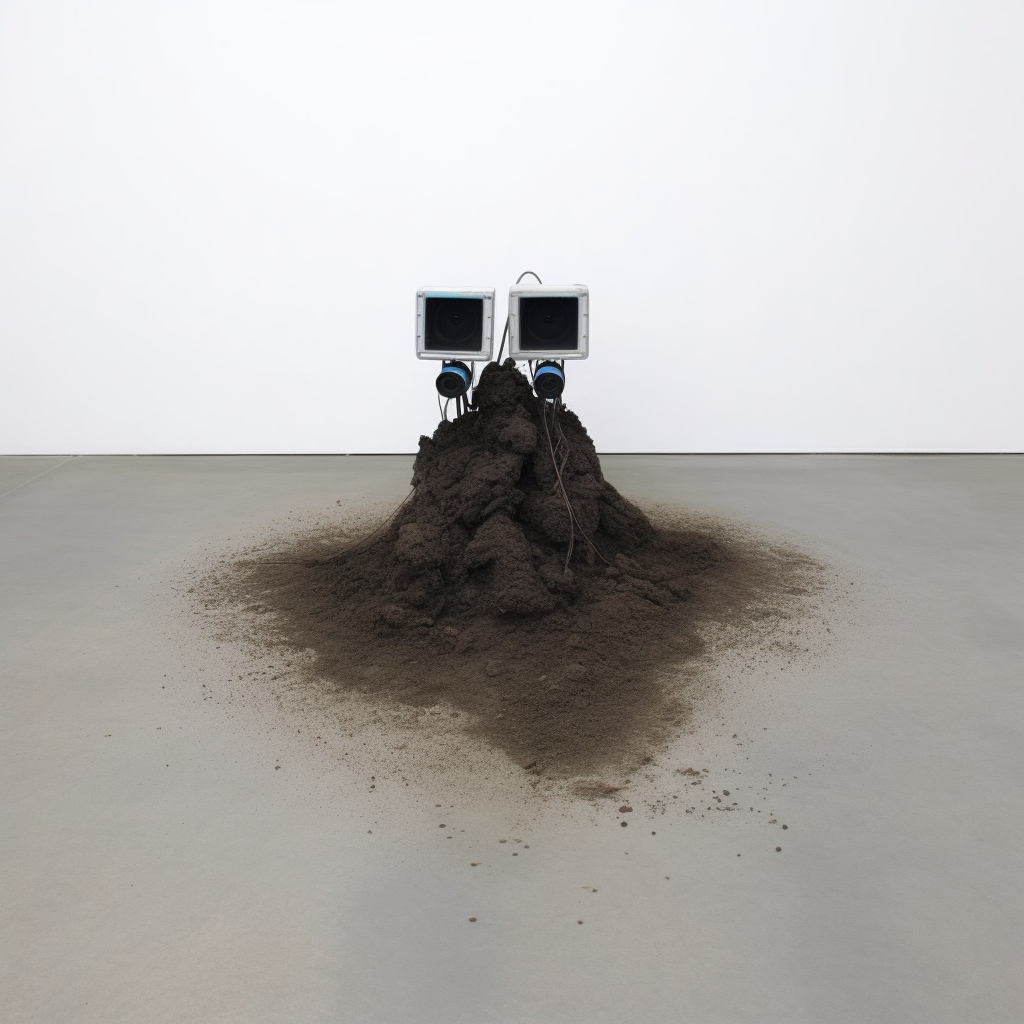


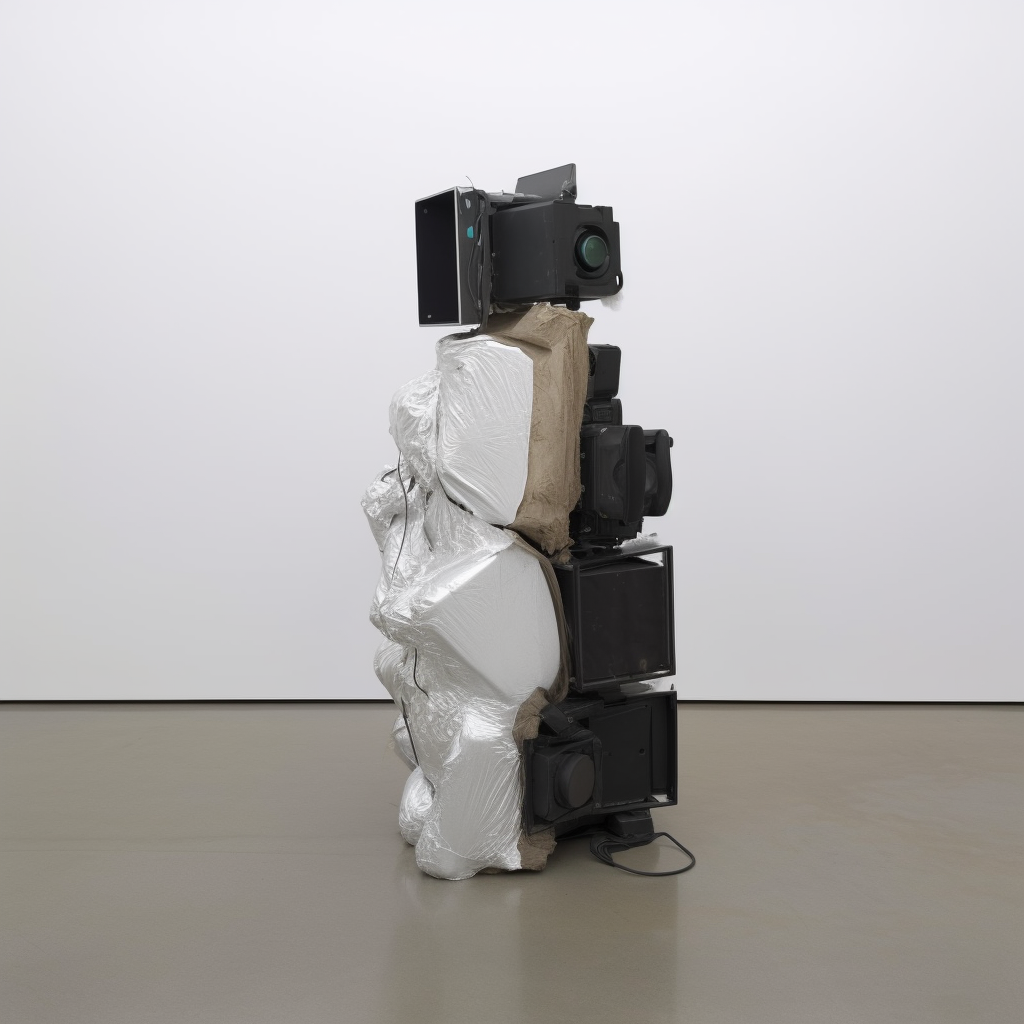

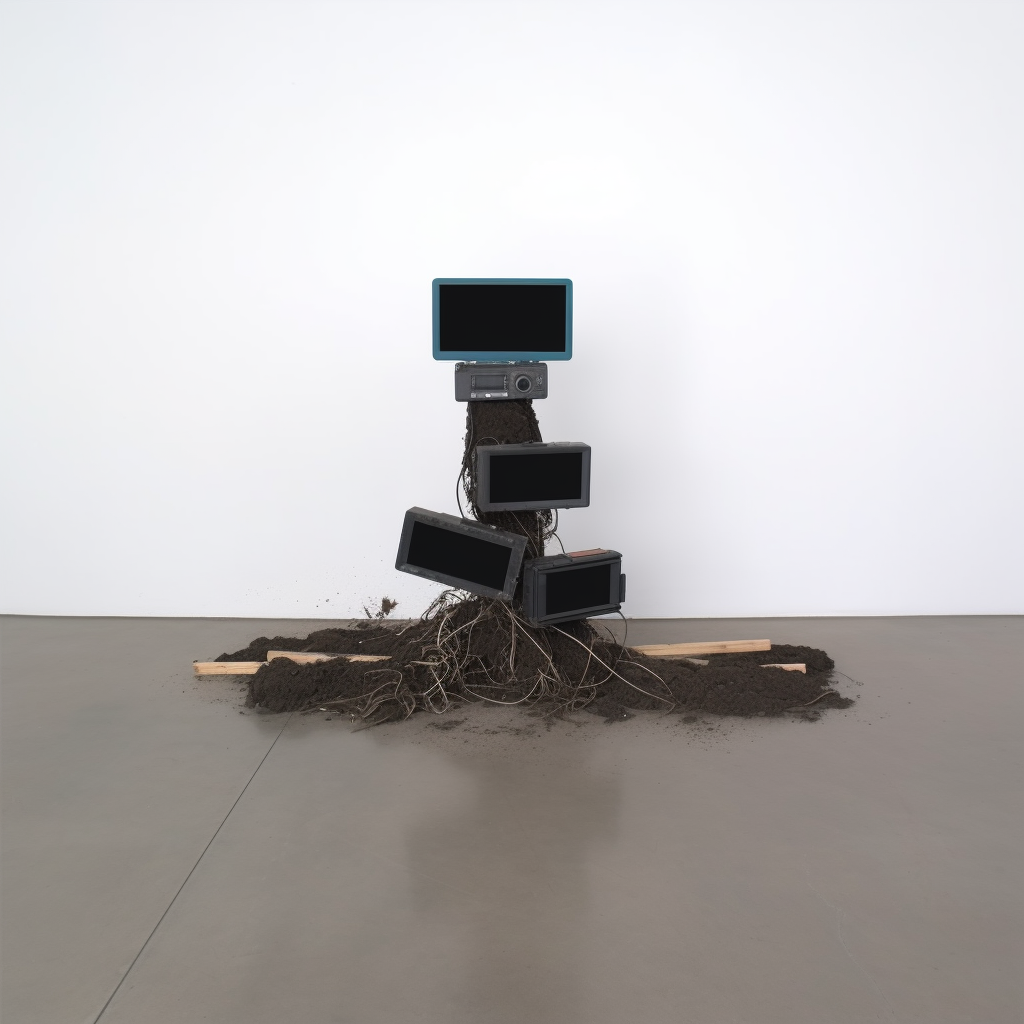


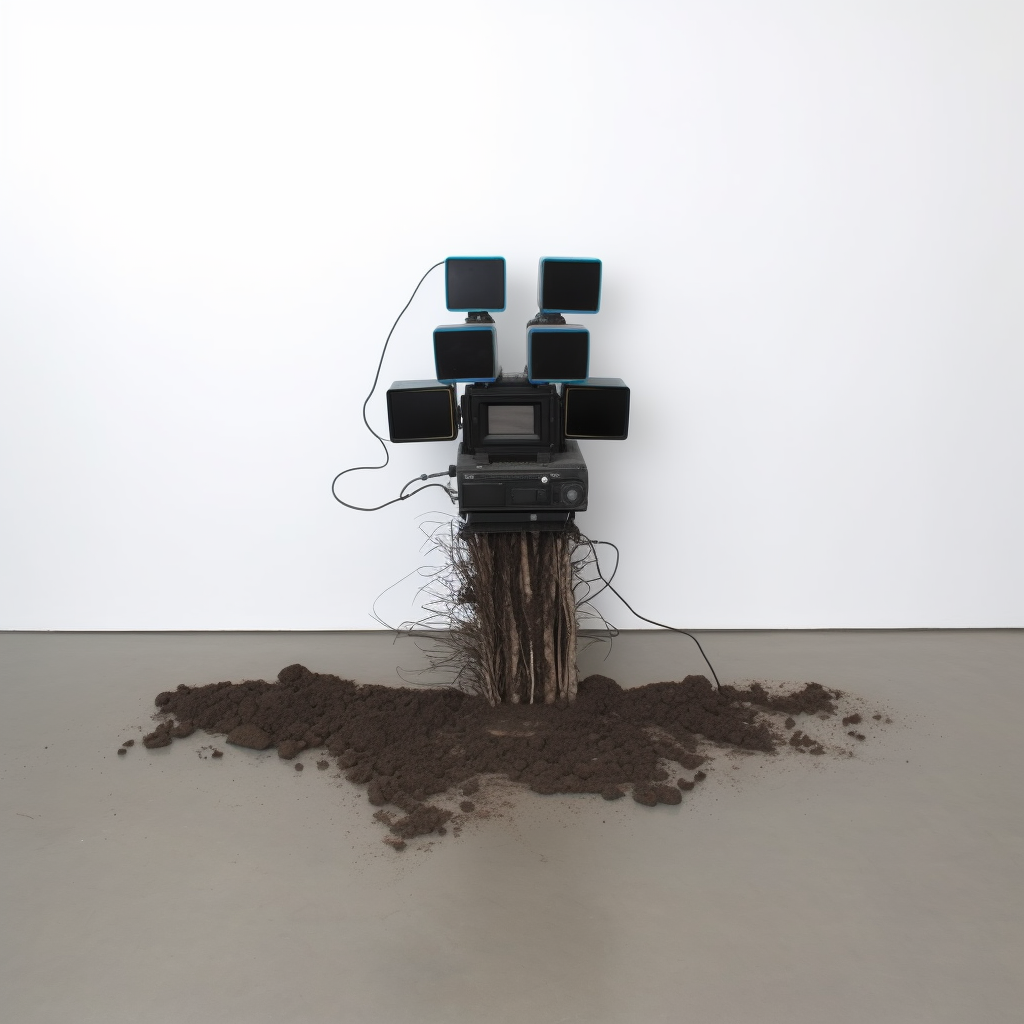
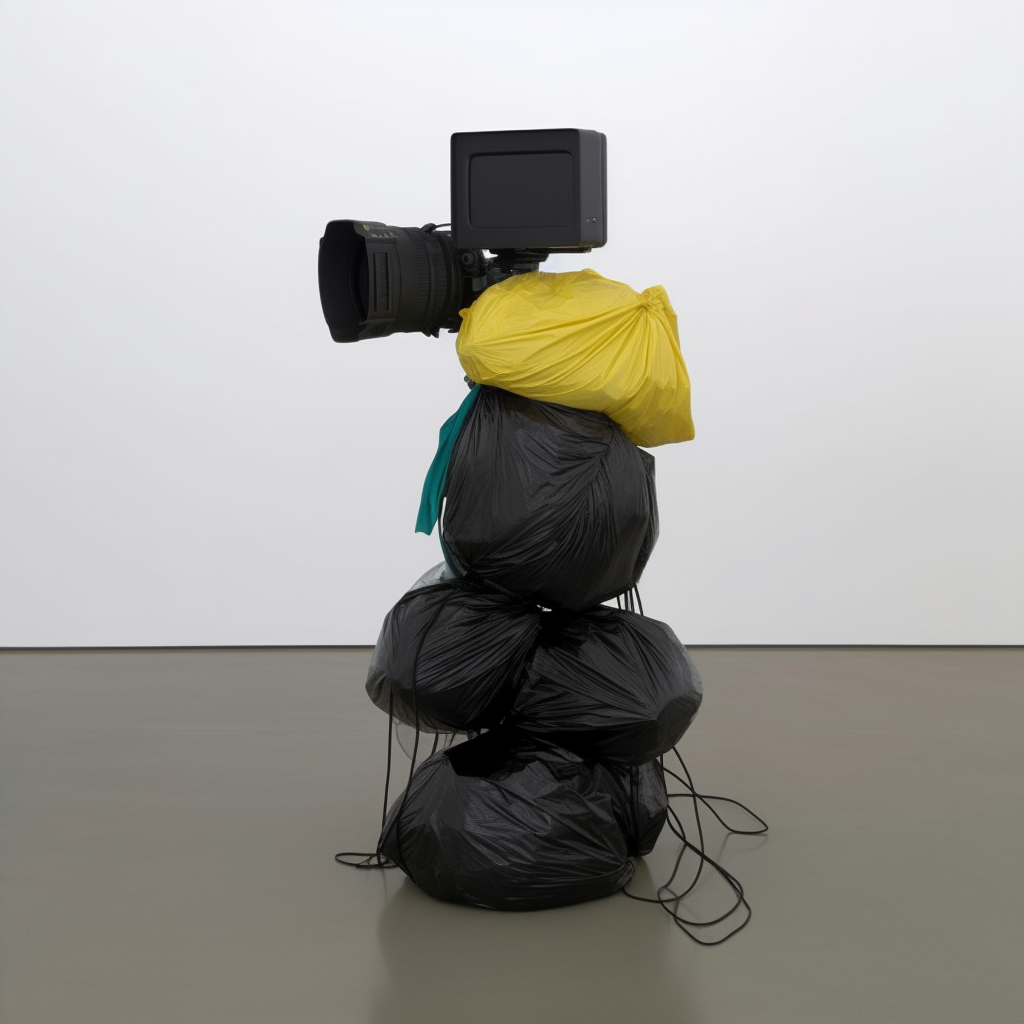

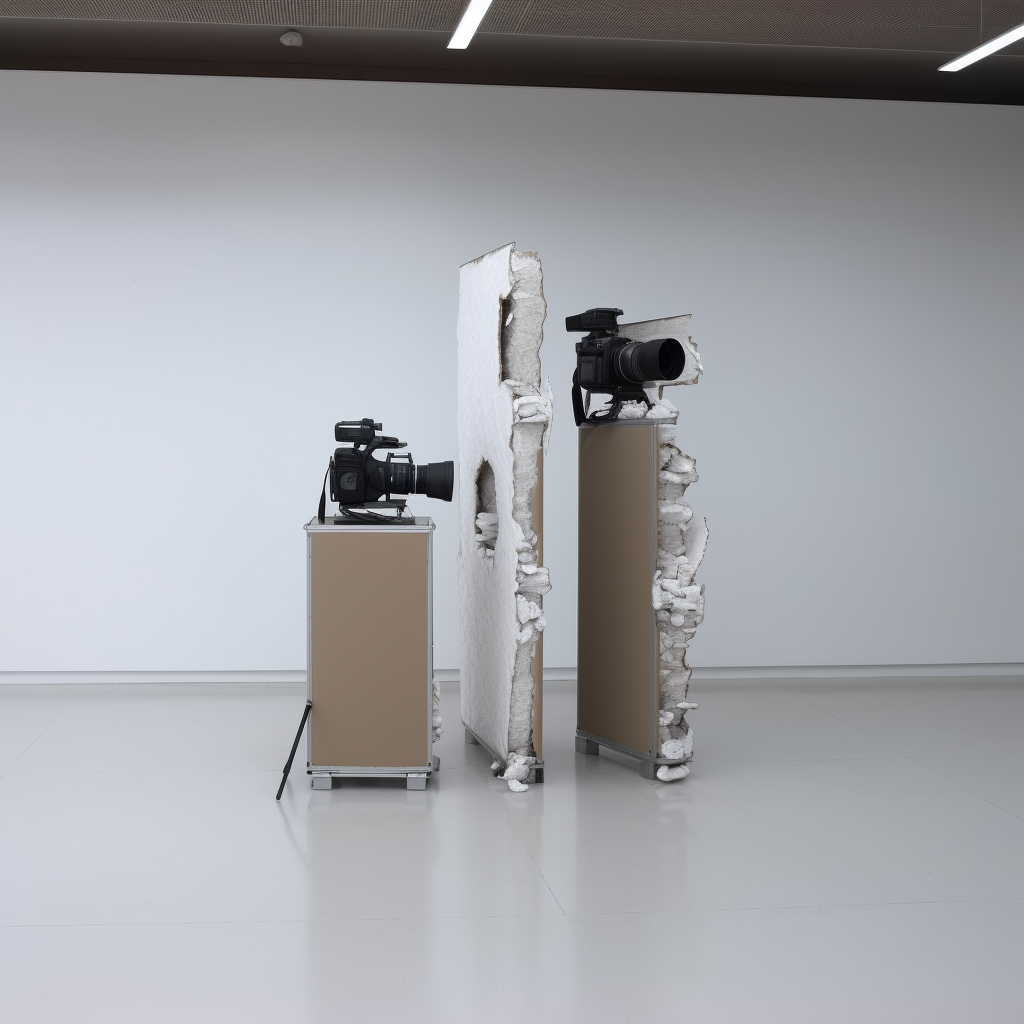

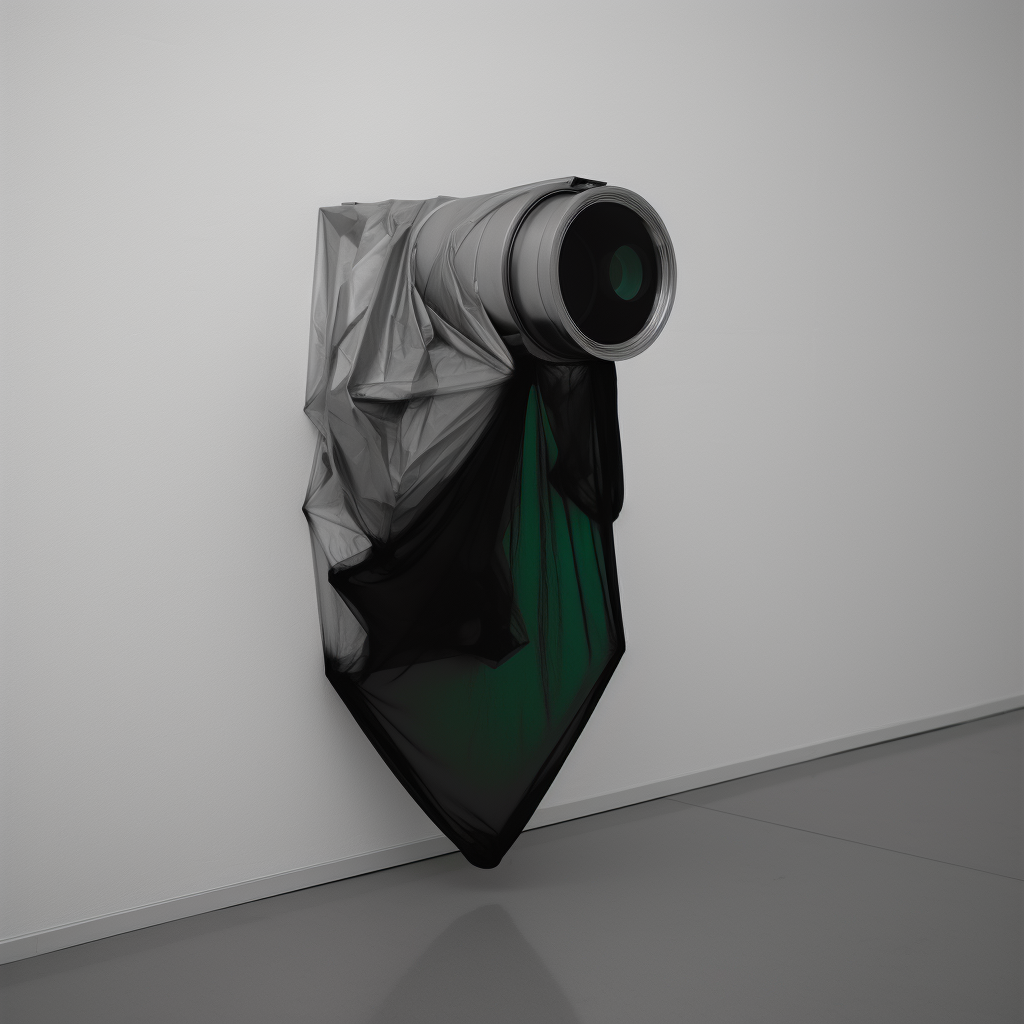




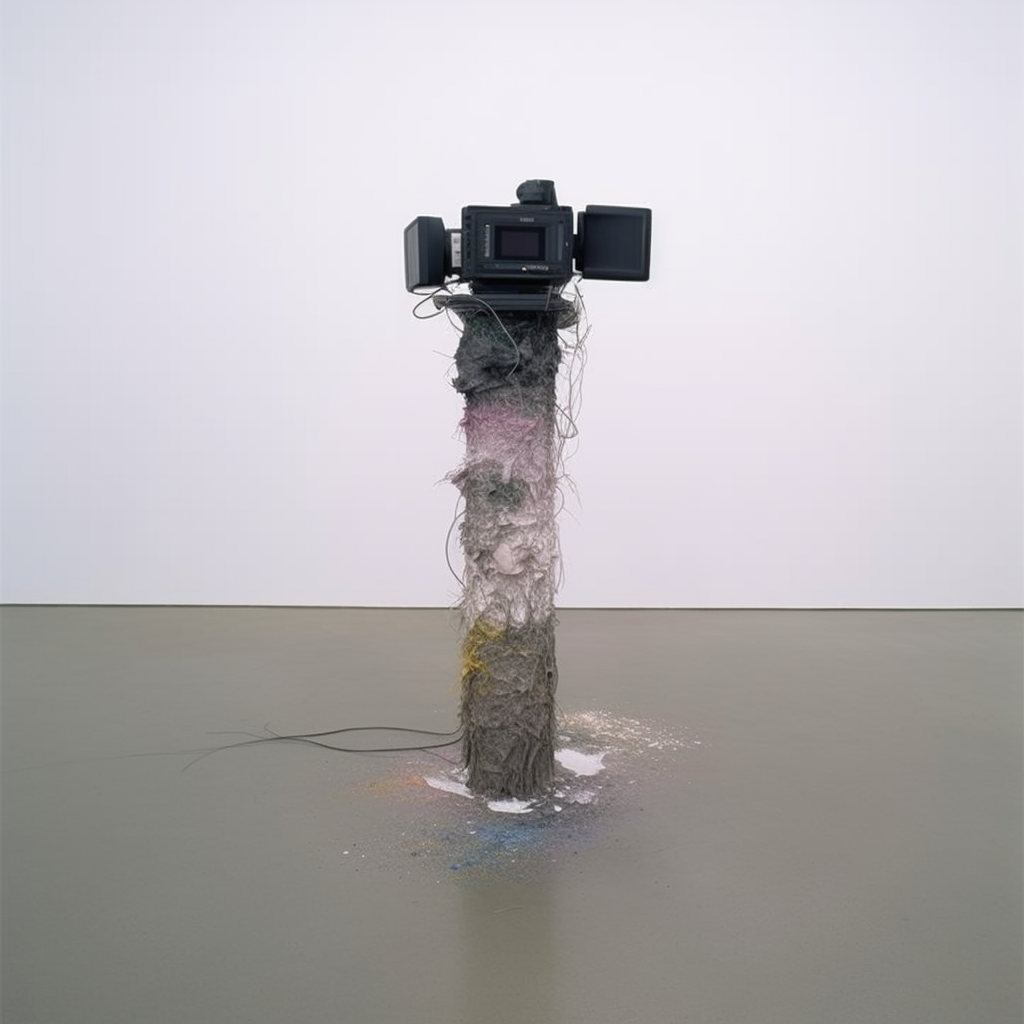

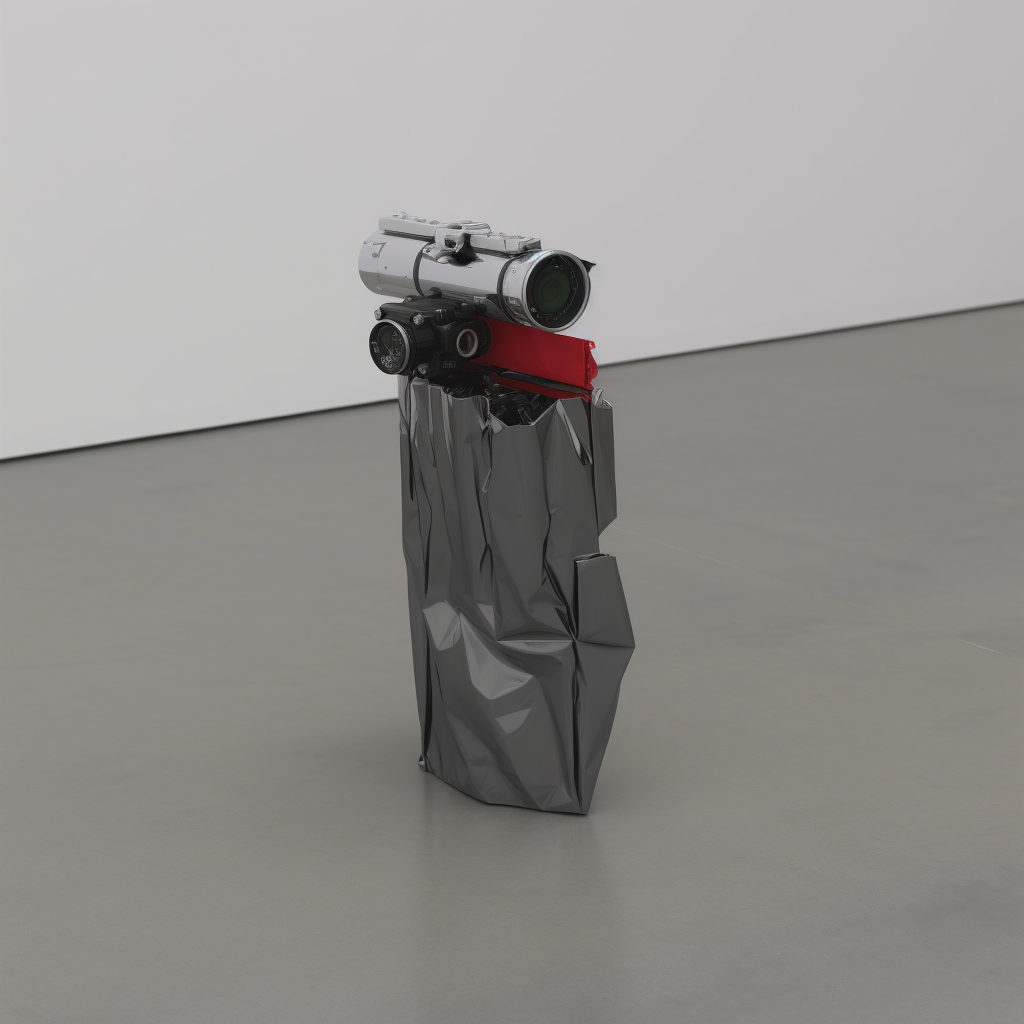















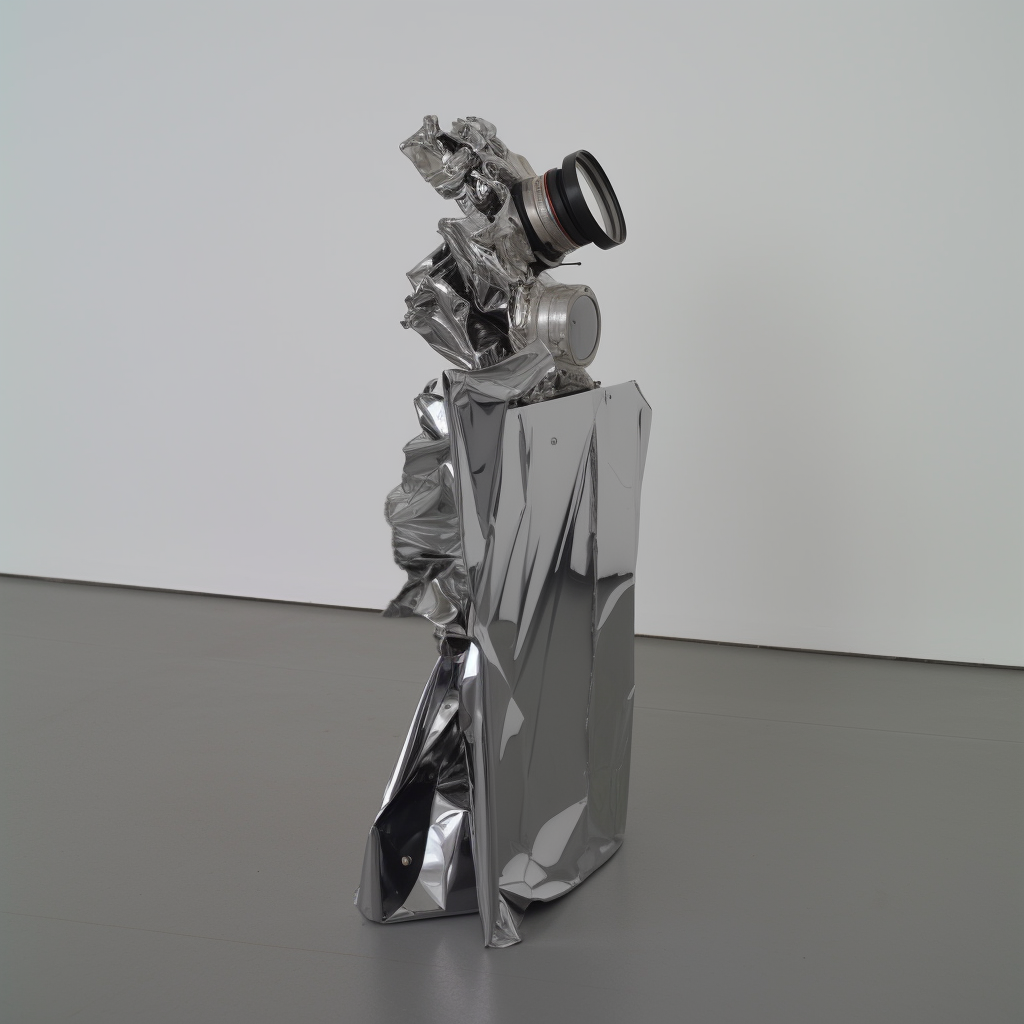
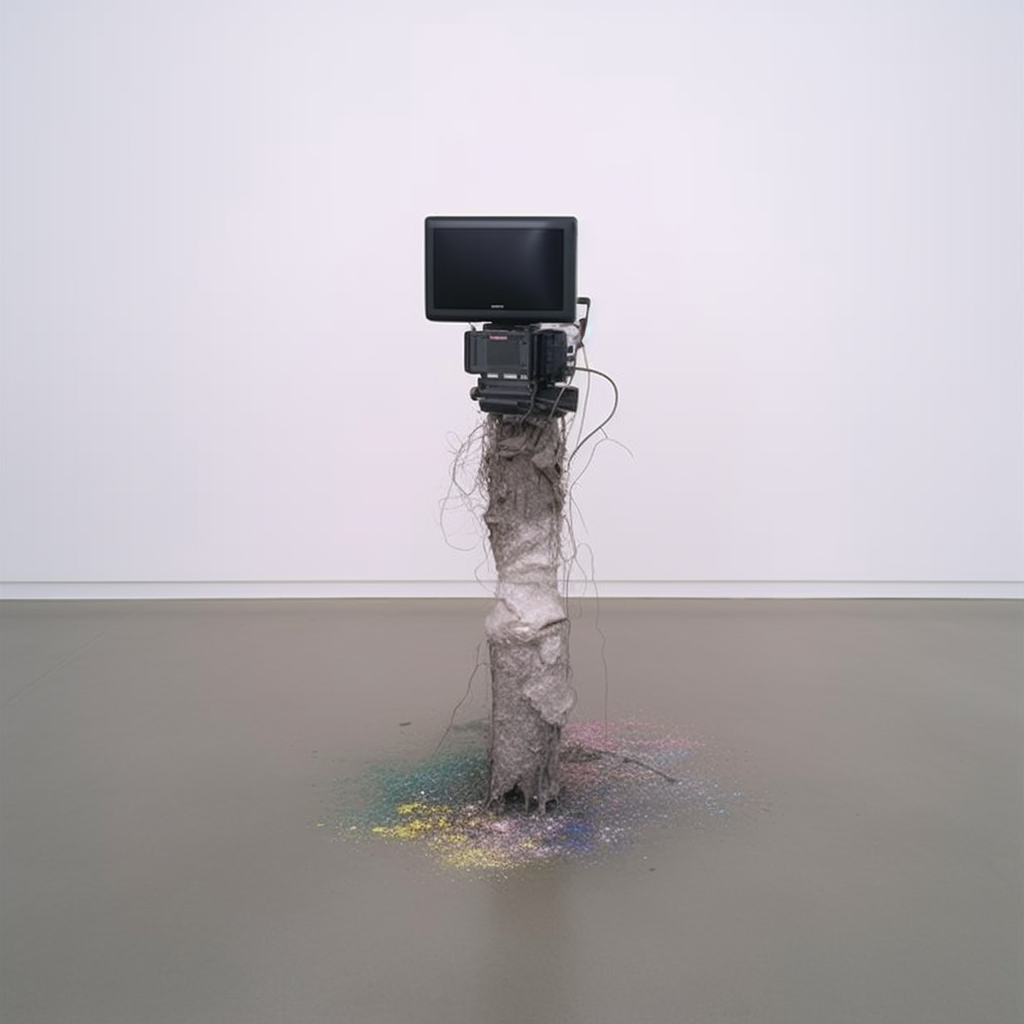


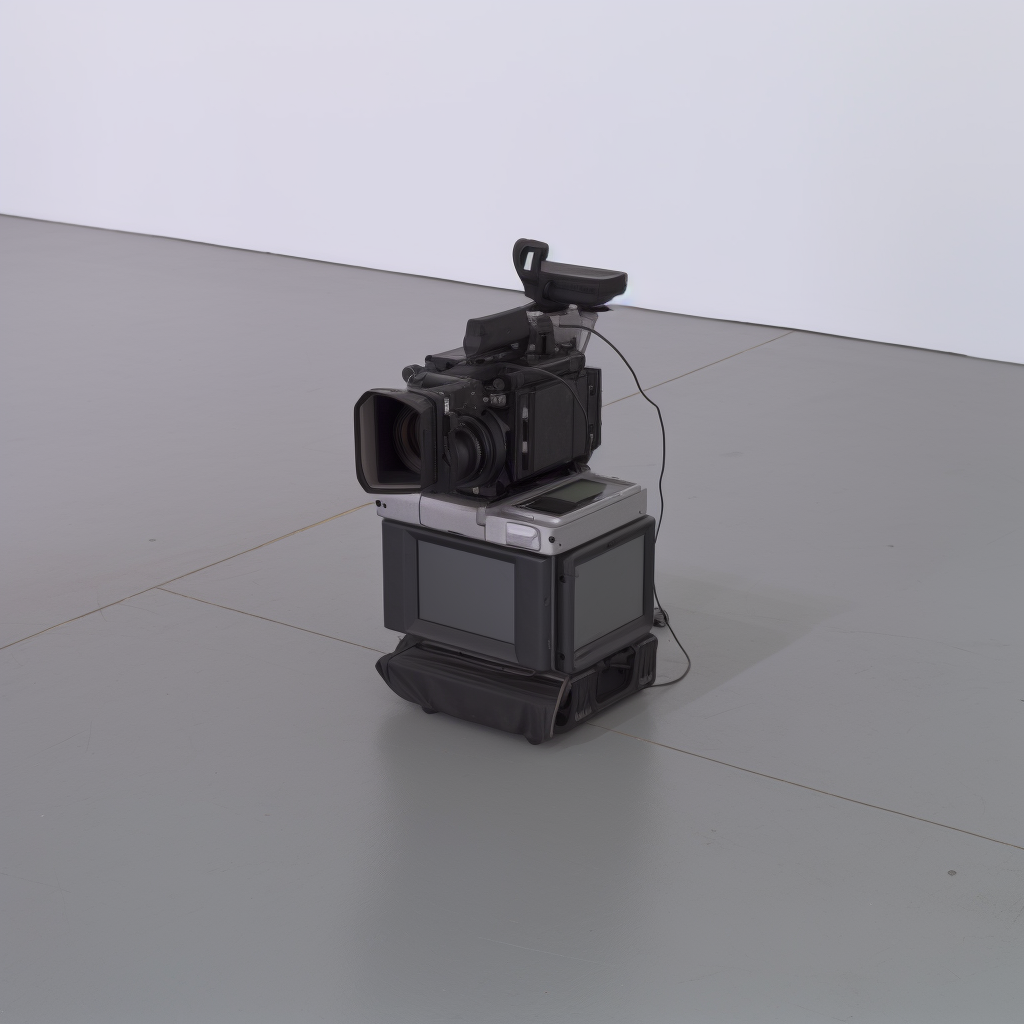
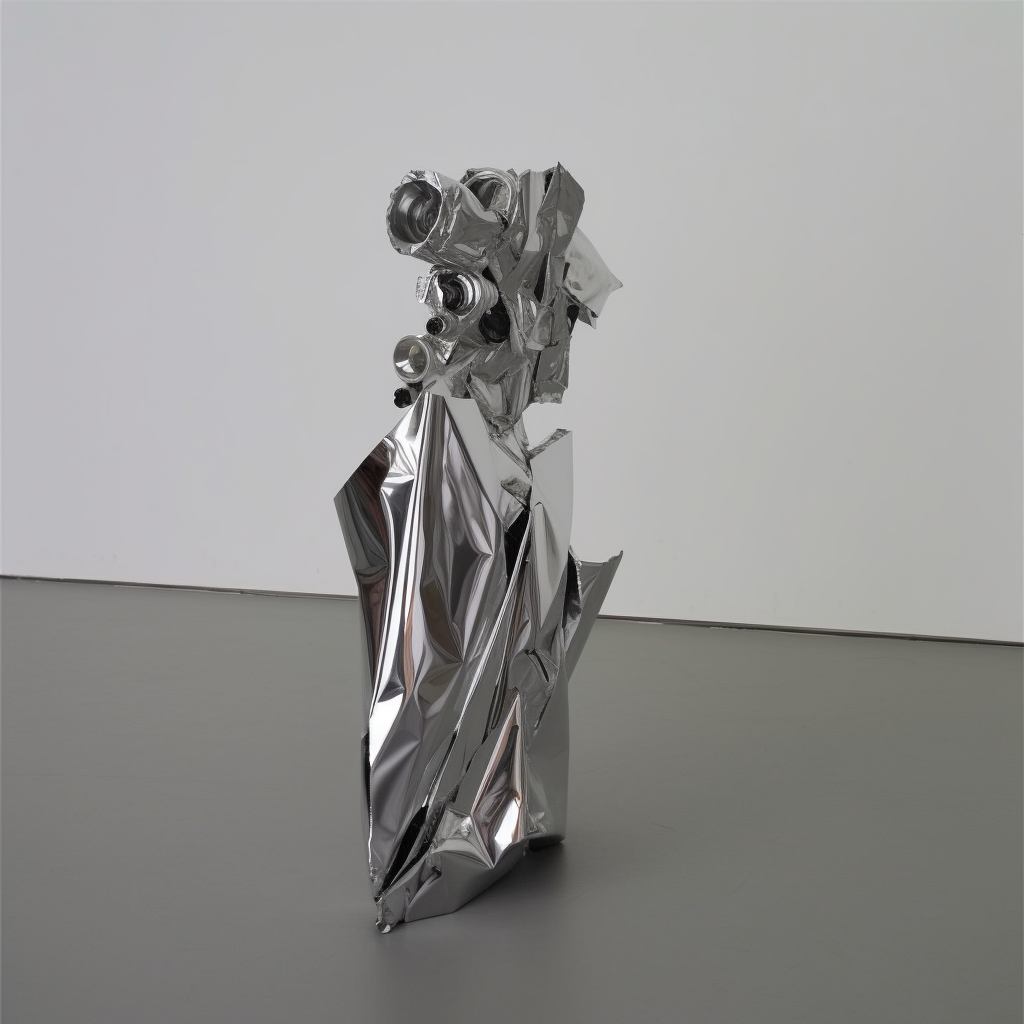



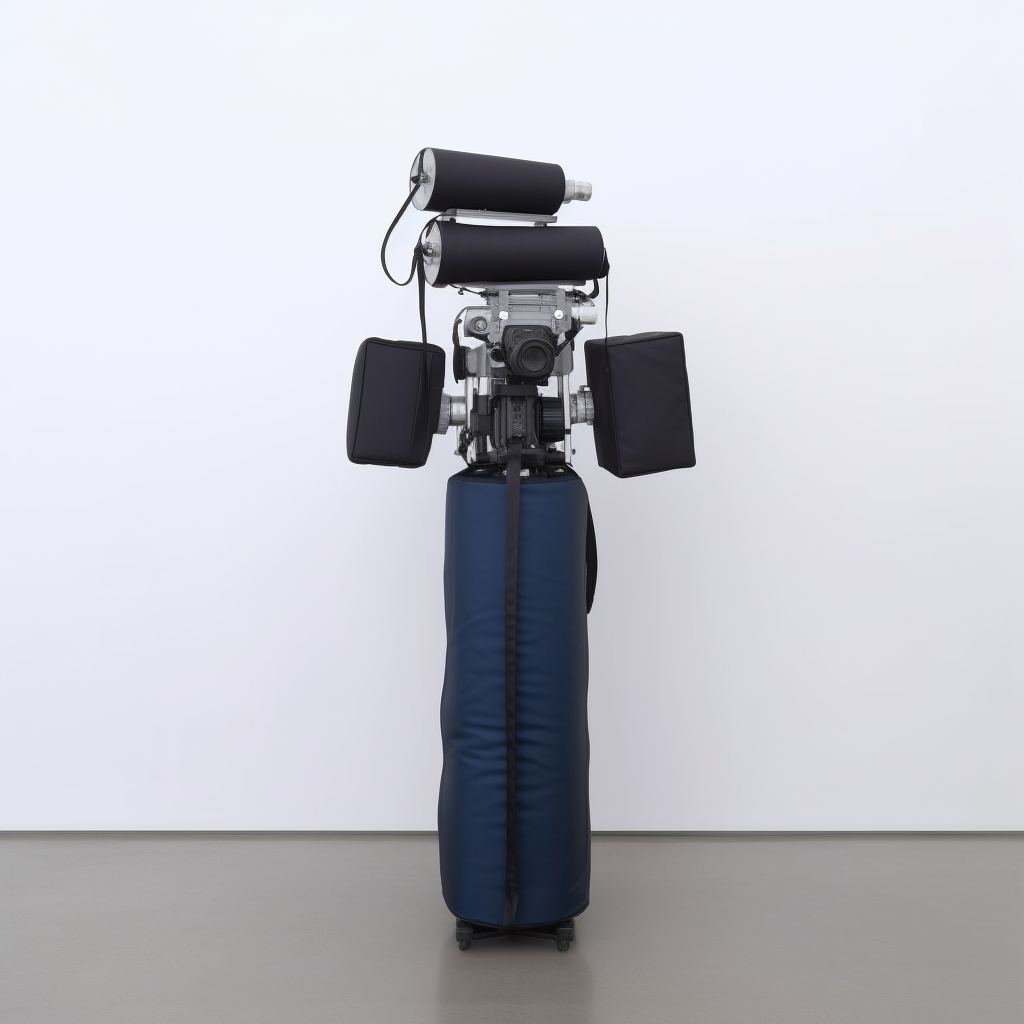



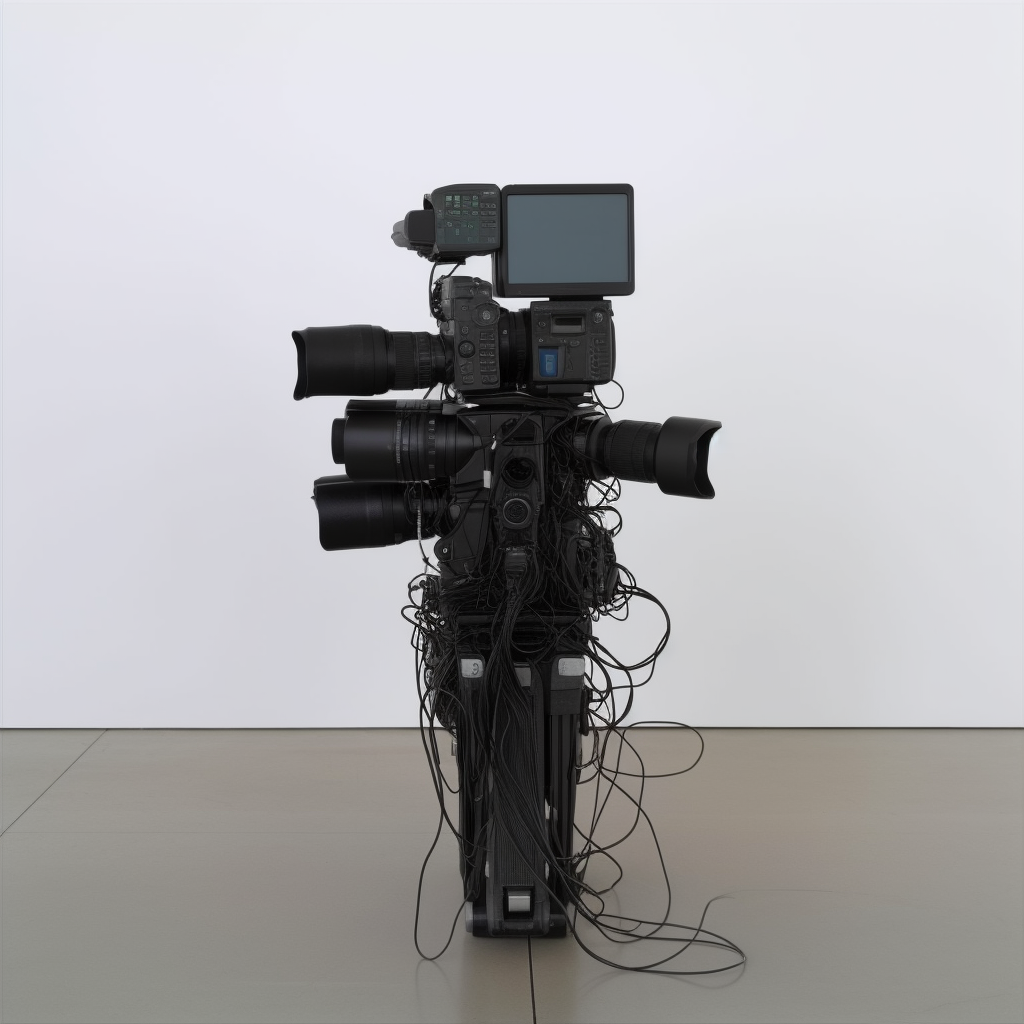




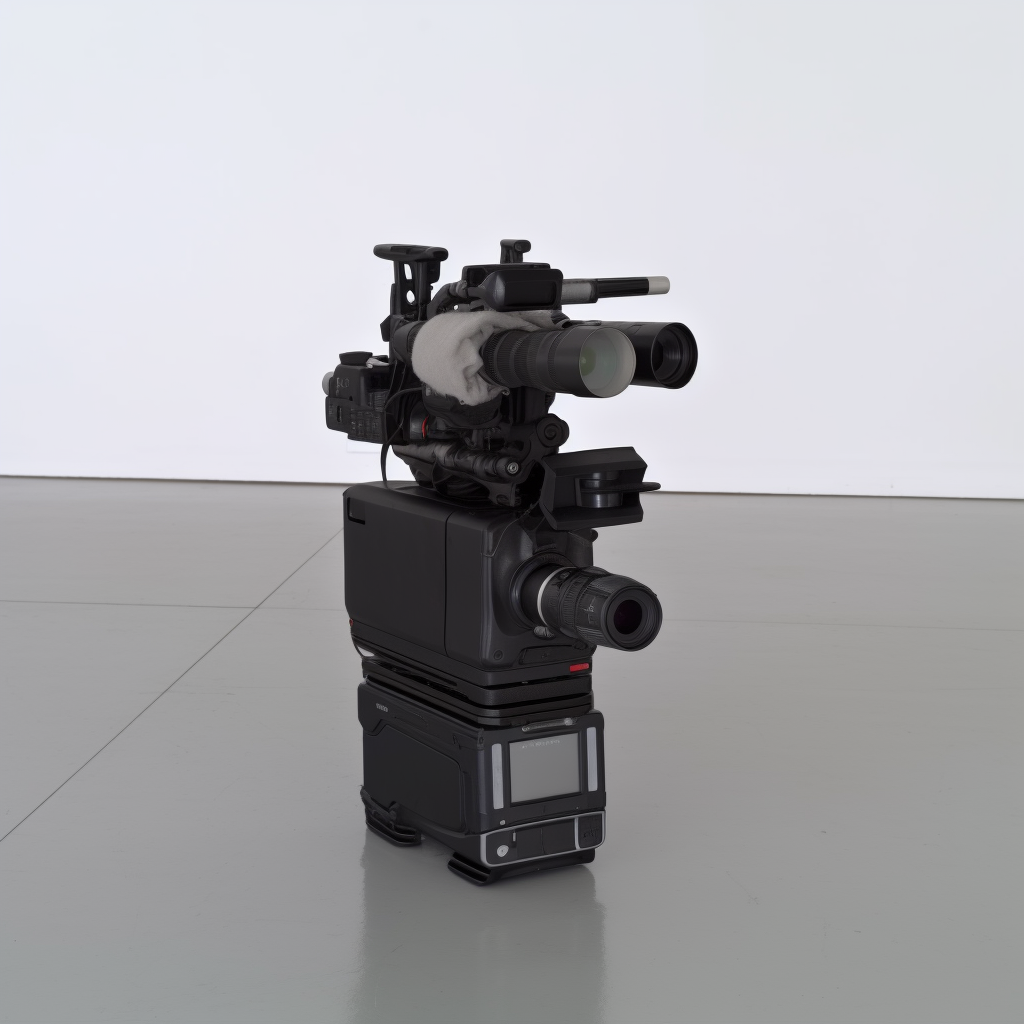

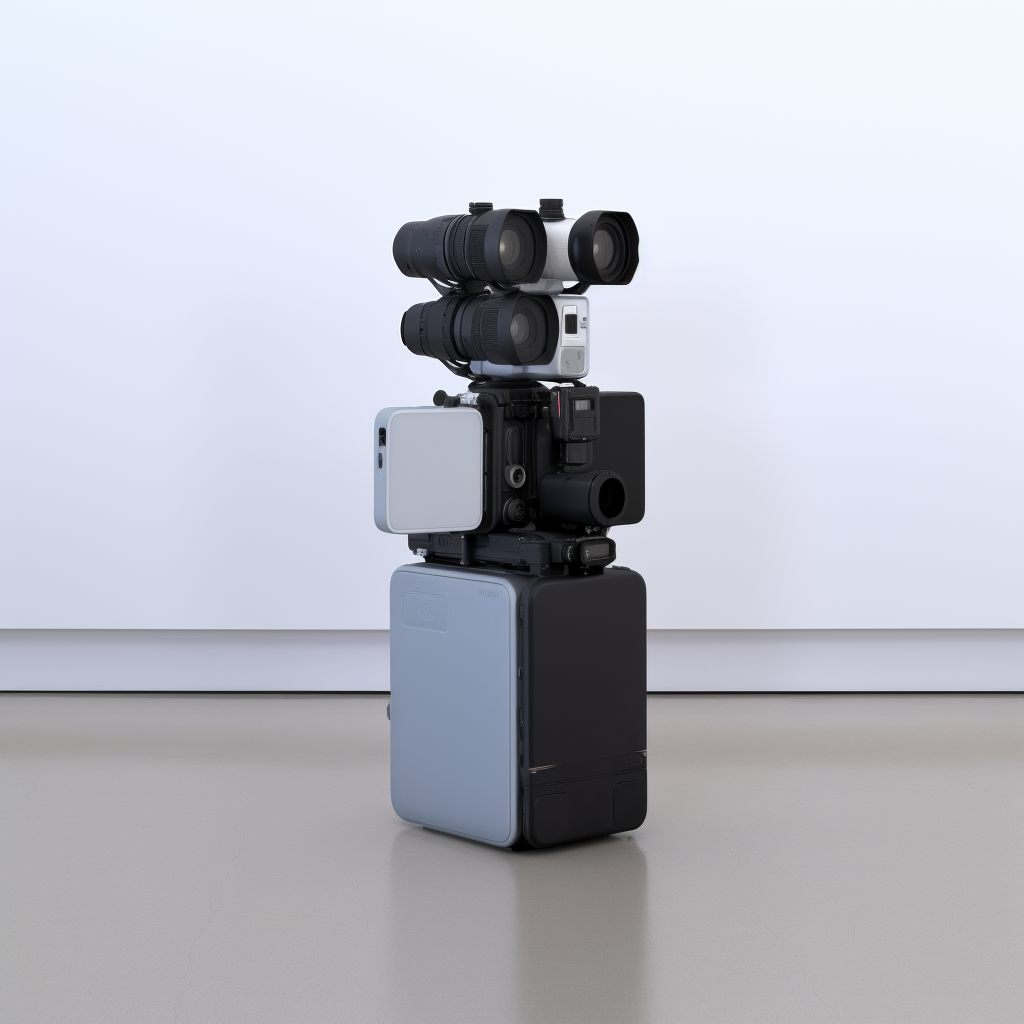

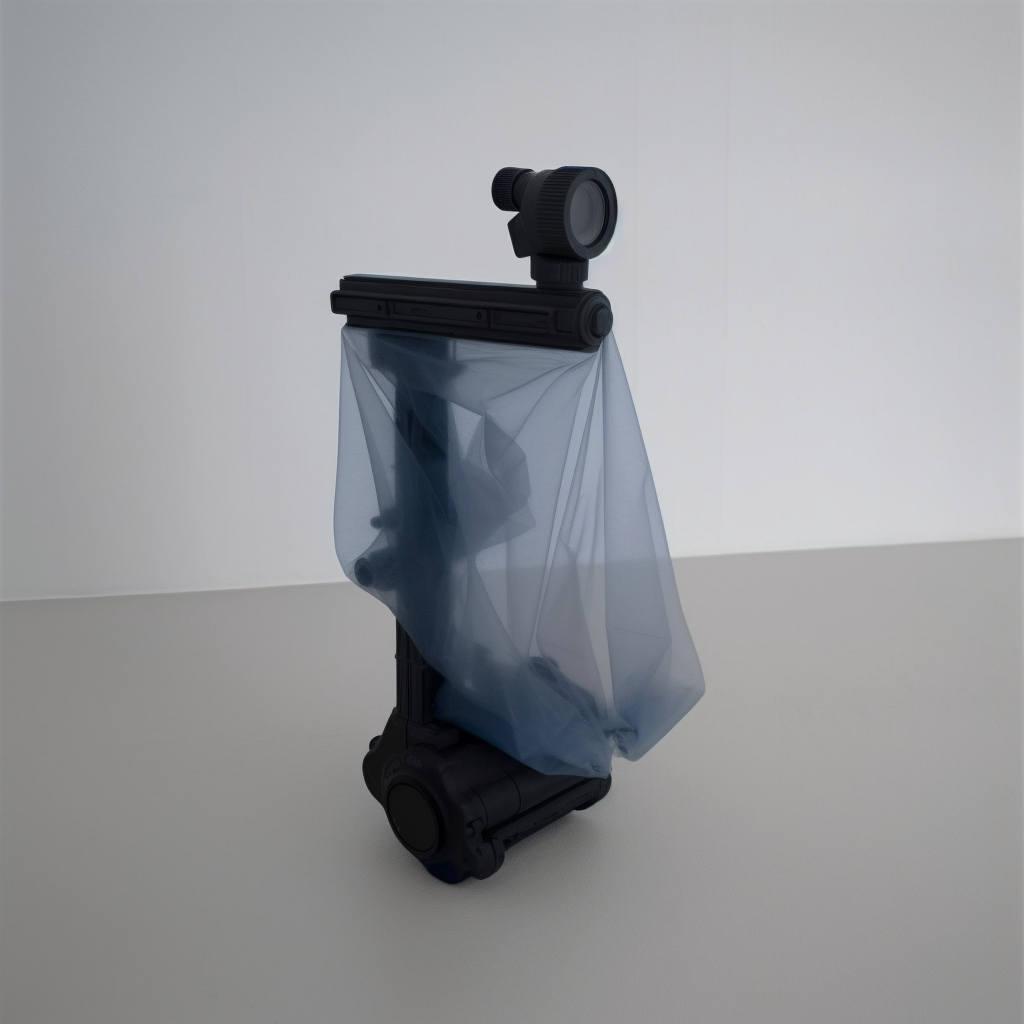

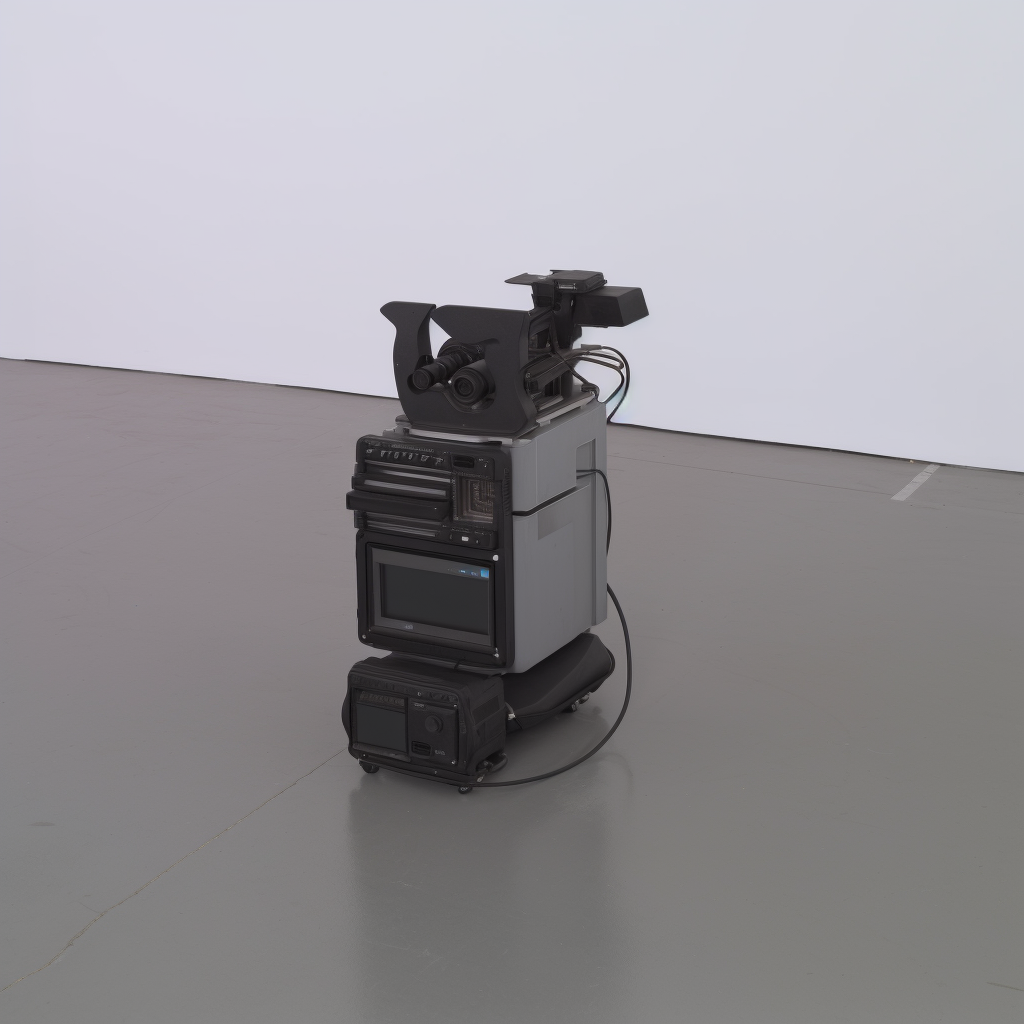


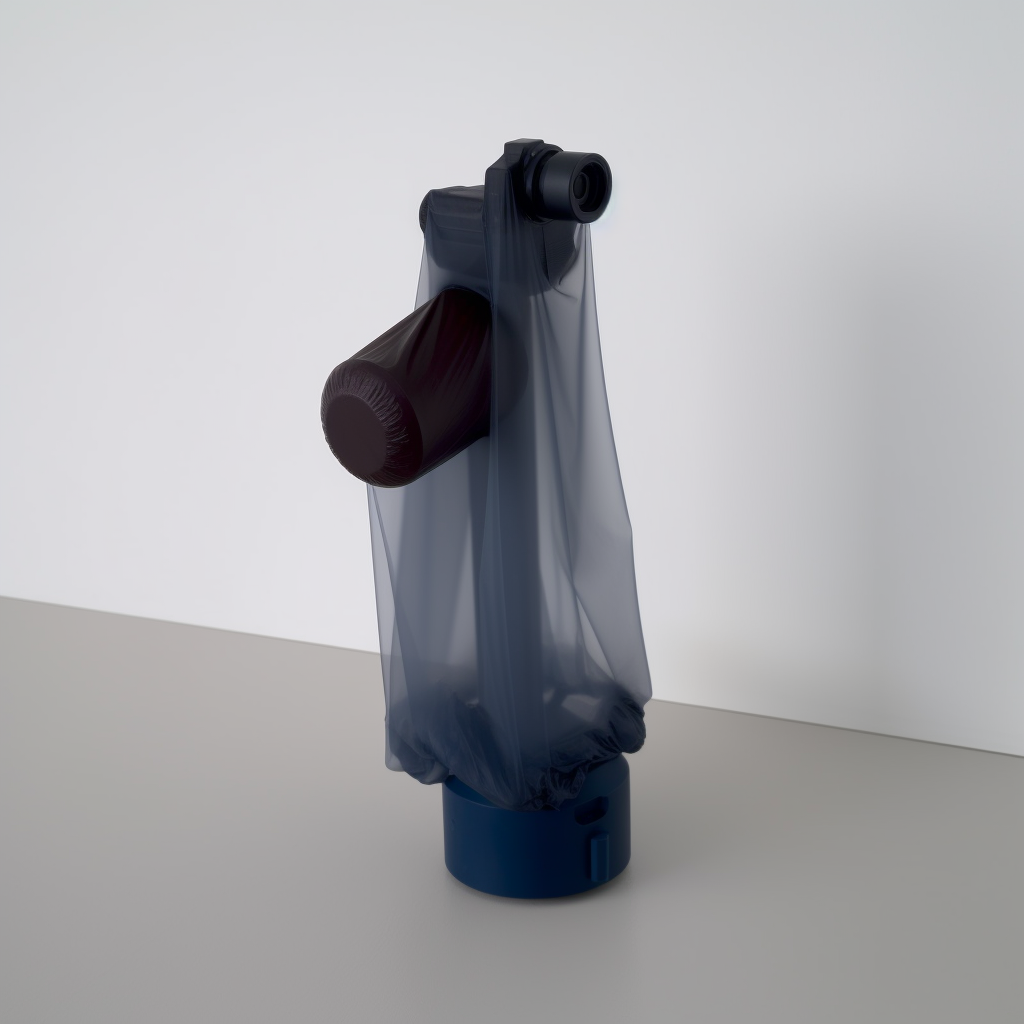





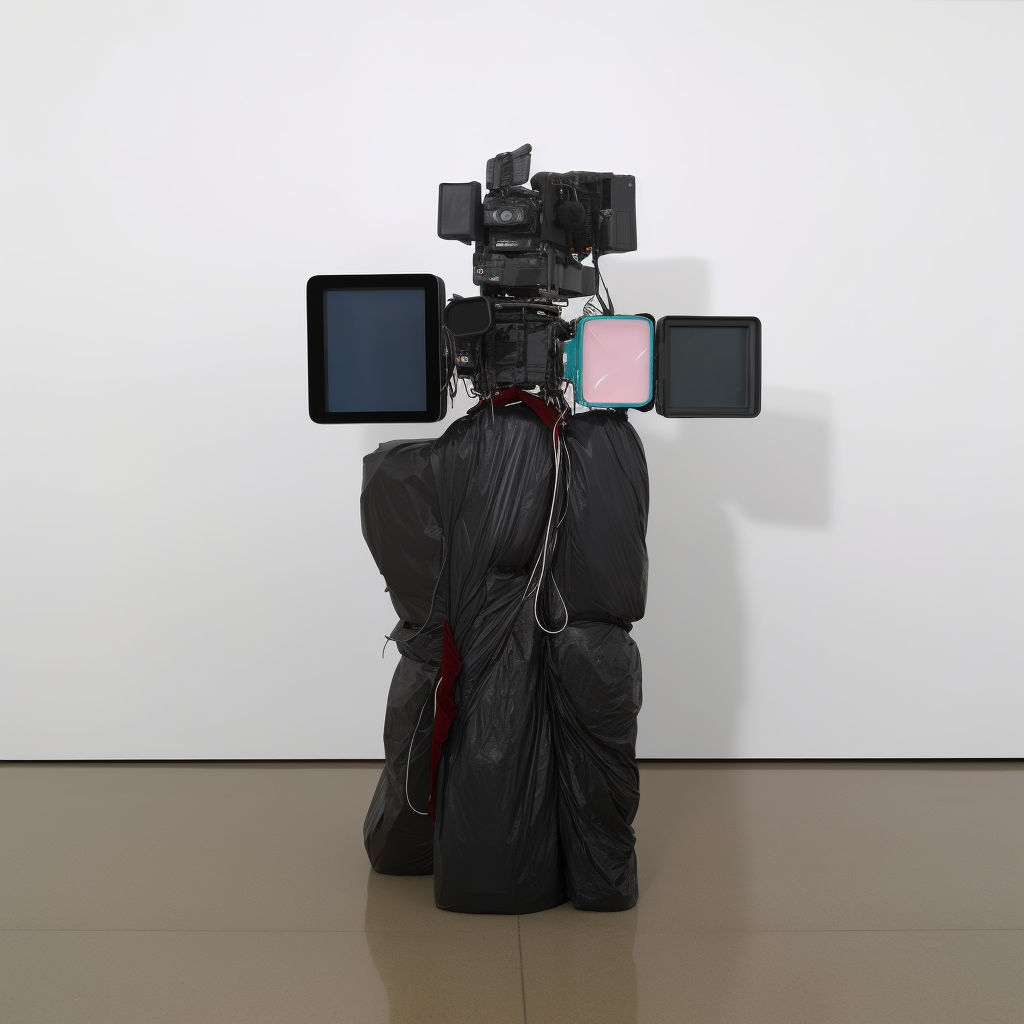

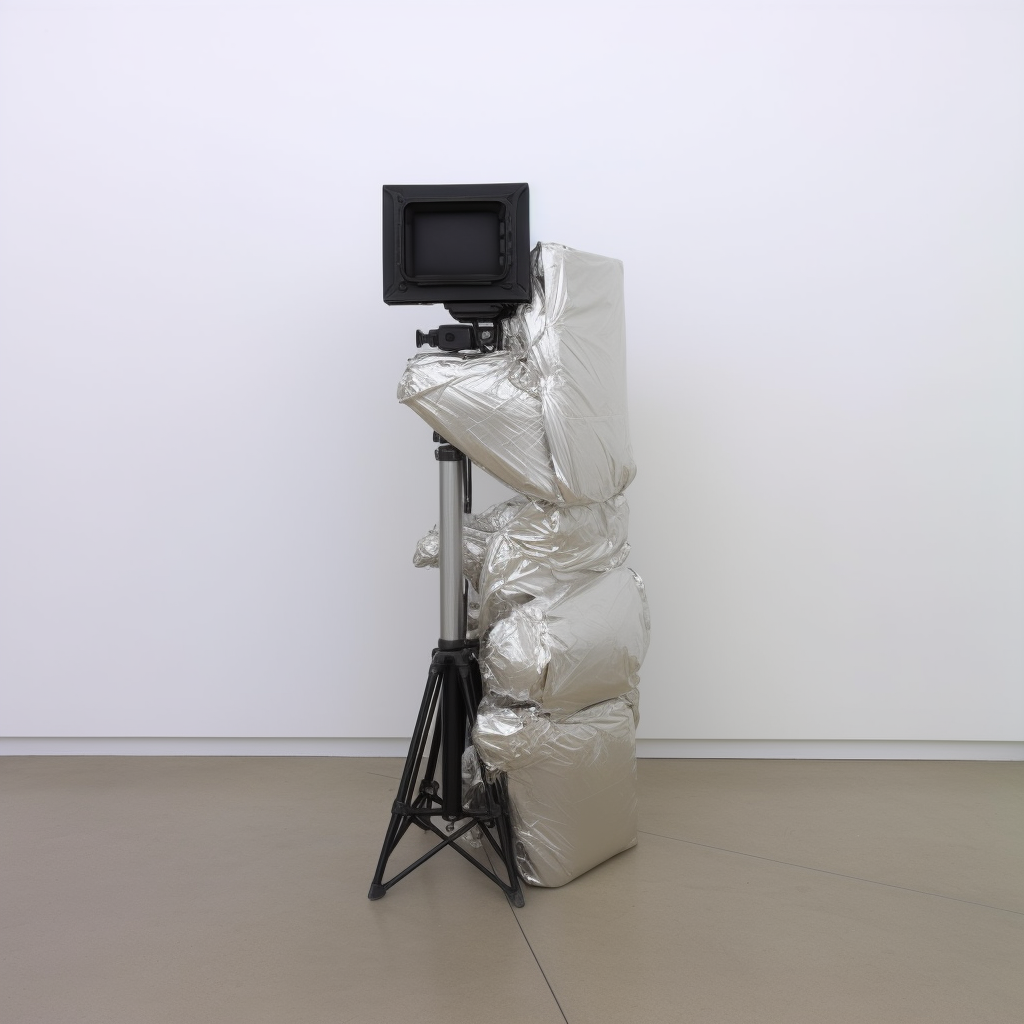
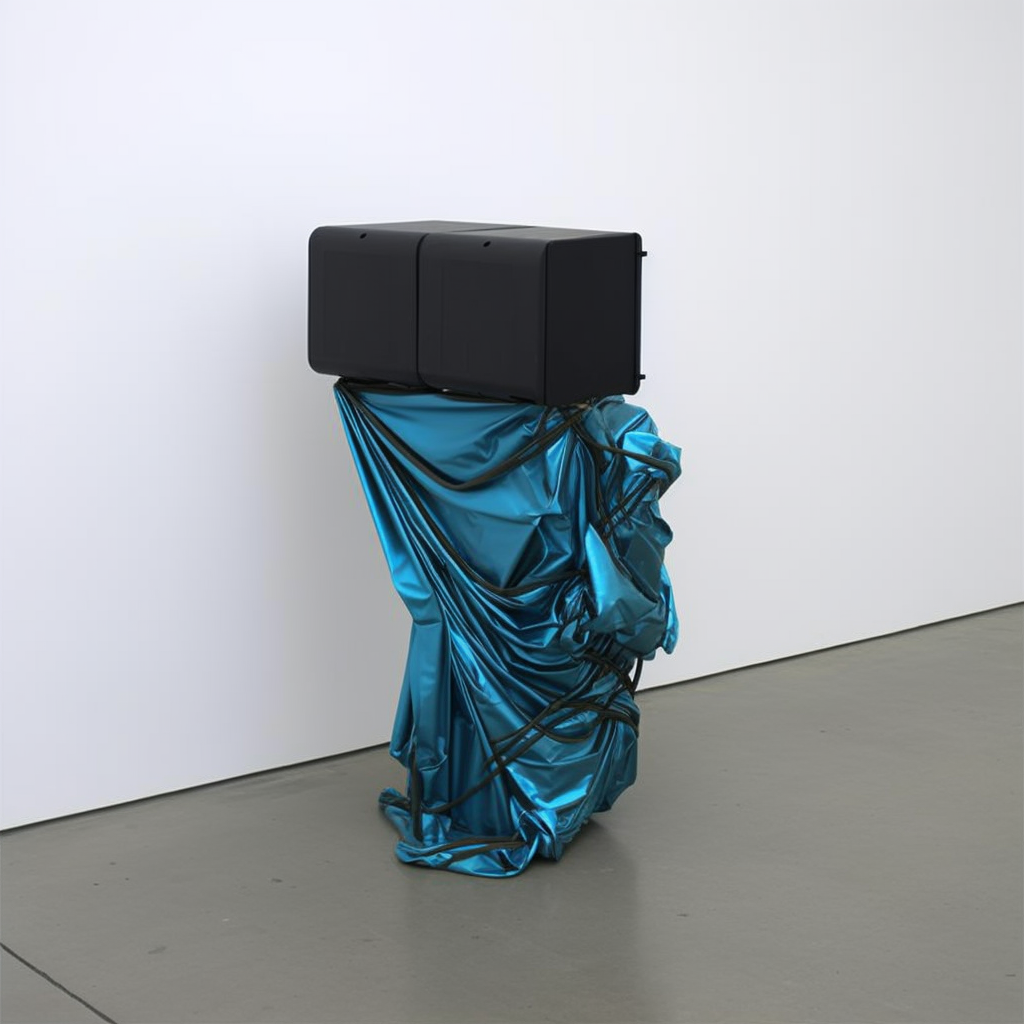


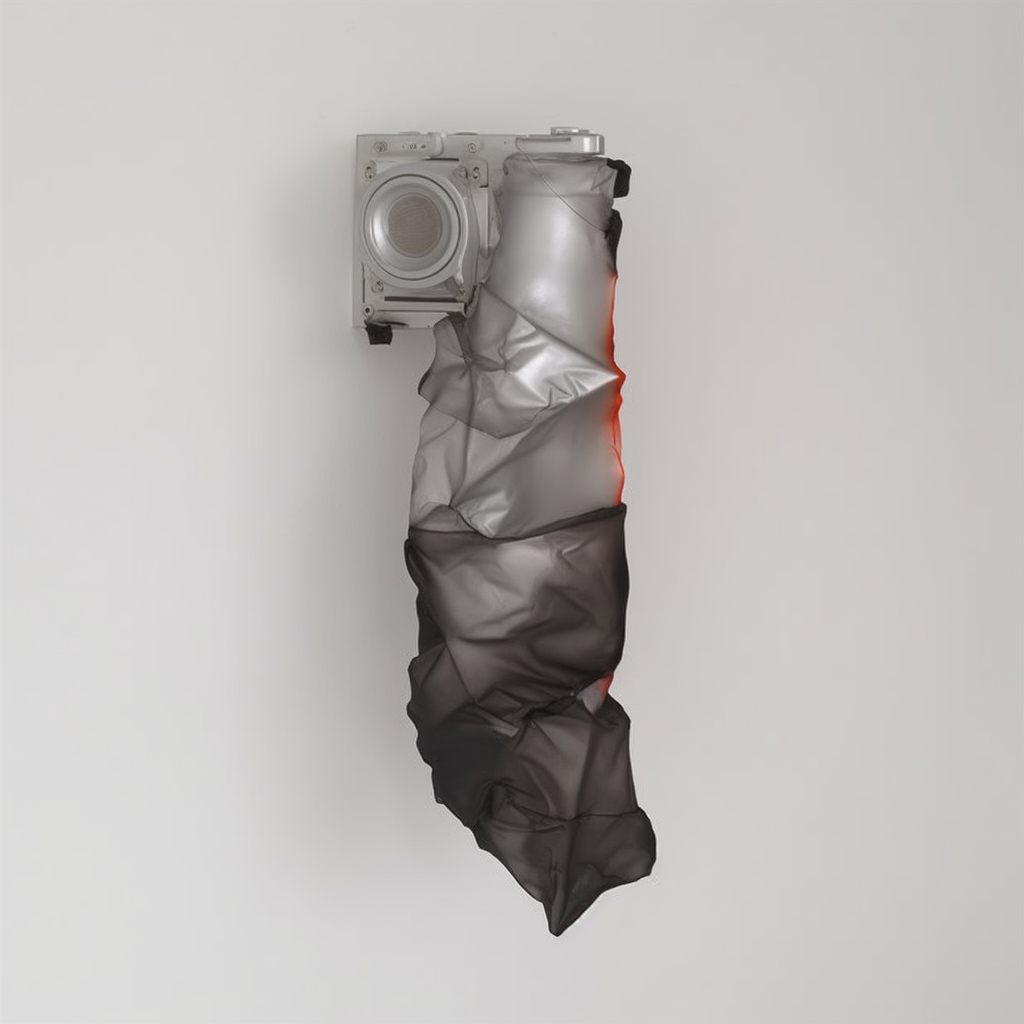
EMBODIED BROWSER (series)
This series consists of modular industrial sculptures, made from UV-printed wood featuring images of web pages. These sculptures serve as a commentary on the intangibility of the digital world, aiming to materialize the ephemeral nature of our online experiences. This tangible transformation challenges traditional sculpture concepts by integrating elements of digital culture into the physical realm. The objects act as placeholders, embodying the digital content they display in a spatial context, prompting reflections on the transposition of virtual data into our concrete world.
Furthermore, these objects question the role of sculpture in the information technology era, exploring the evolving relationship between the viewer and the artwork. The industrial modules, repurposed into art, reflect contemporary discussions on the convergence of art, technology, and commerce. By adopting the visual language of the browser's interface, the art emphasizes the omnipresence of the digital environment, hinting at its influence on our perception and understanding of the world.
The physical presence of these sculptures, paradoxically representing the non-physical, initiates a dialogue between the tangible and intangible aspects of our reality. What does it mean to give form and permanence to something inherently formless and transient? This sculptural approach to the digital experience offers a moment of contemplation, a space to ponder the dichotomy between the longevity of traditional art forms and the fleeting nature of digital interactions.
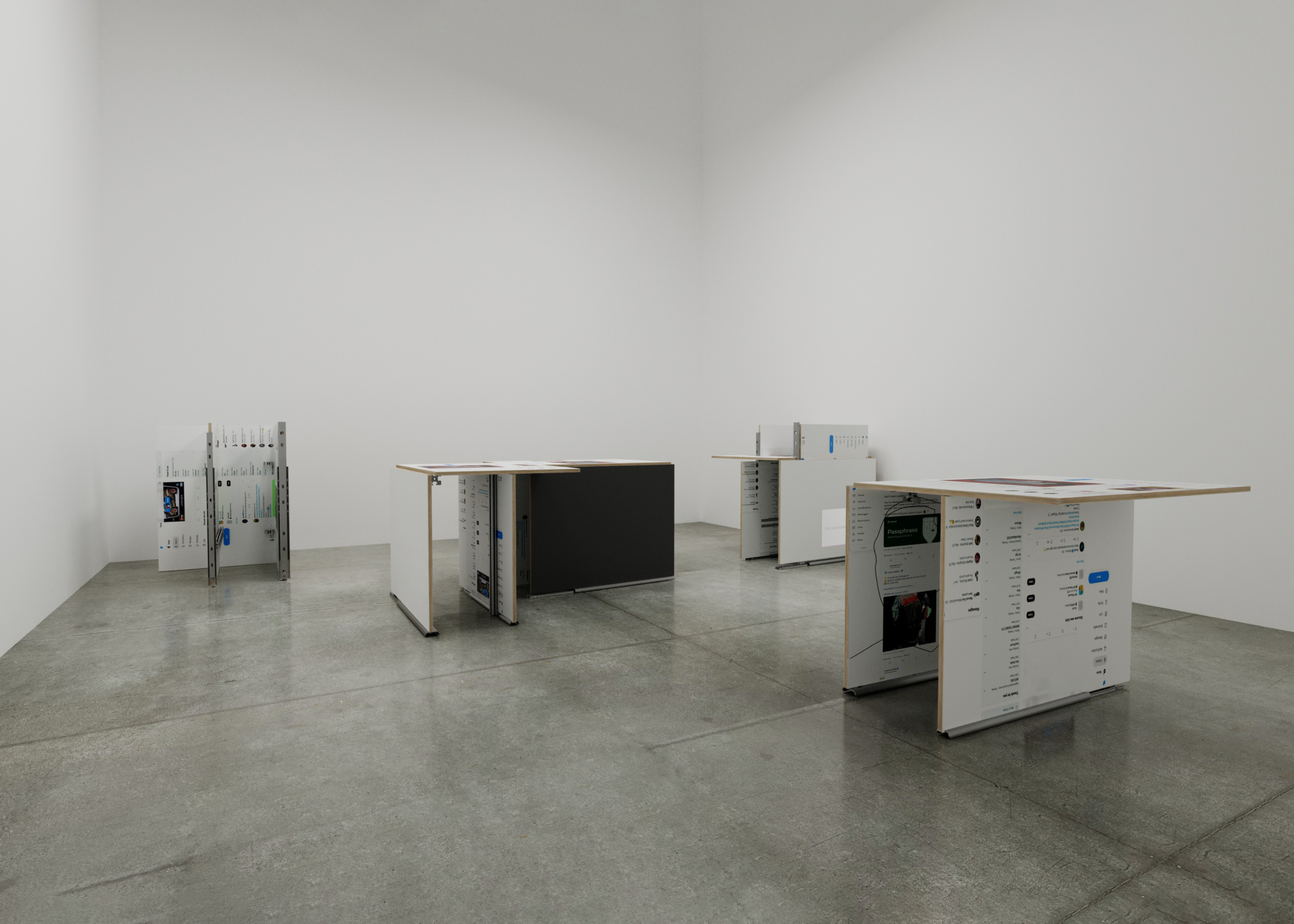
installation view:embodied browser (series), wood, mobile industrial structures, and uv printing, 2023

installation view:embodied browser (series), wood, mobile industrial structures, projection, and uv printing, 2023

installation view:embodied browser (series), wood, mobile industrial structures, projection, and uv printing, 2023
